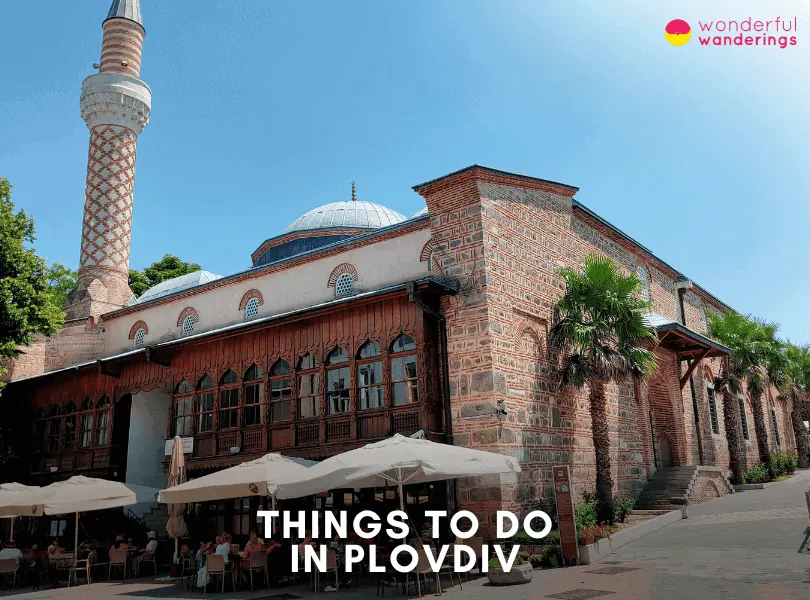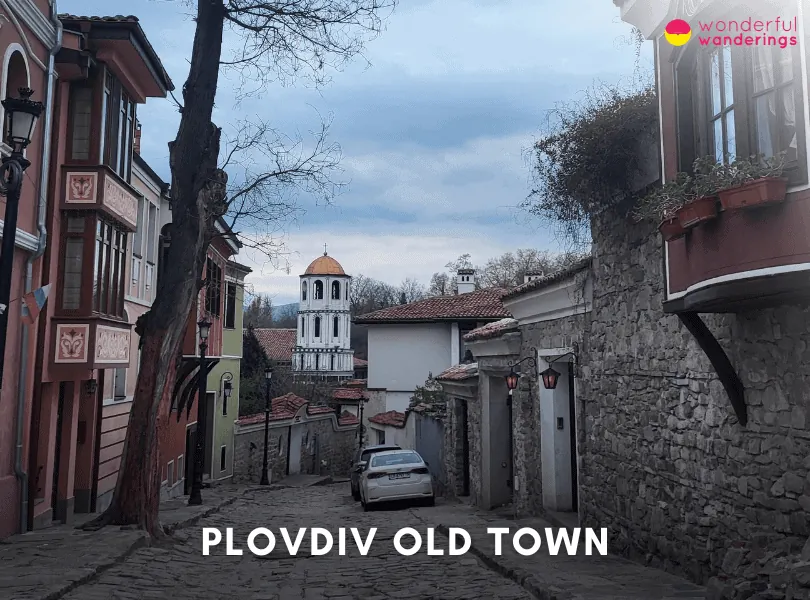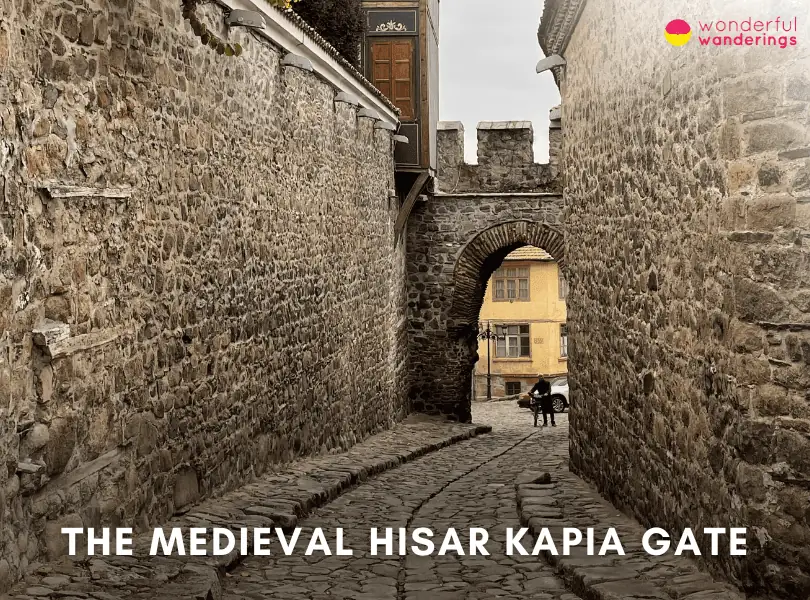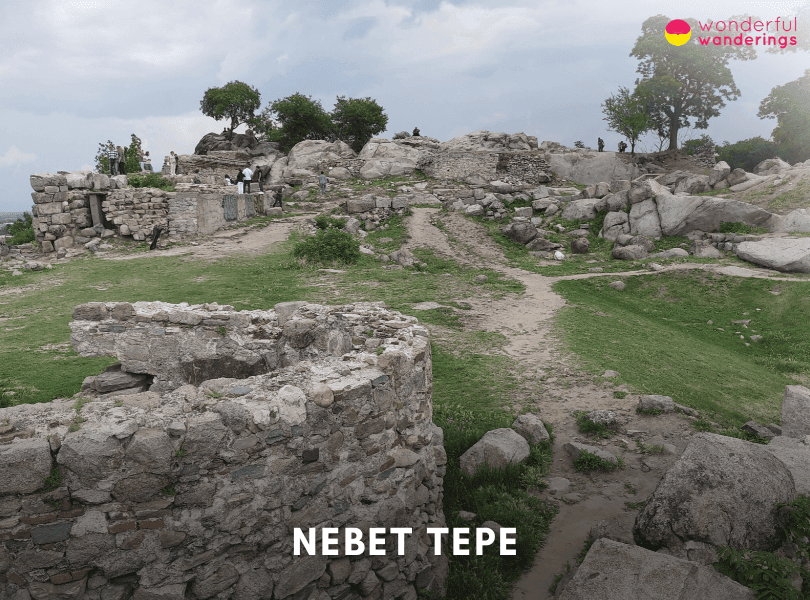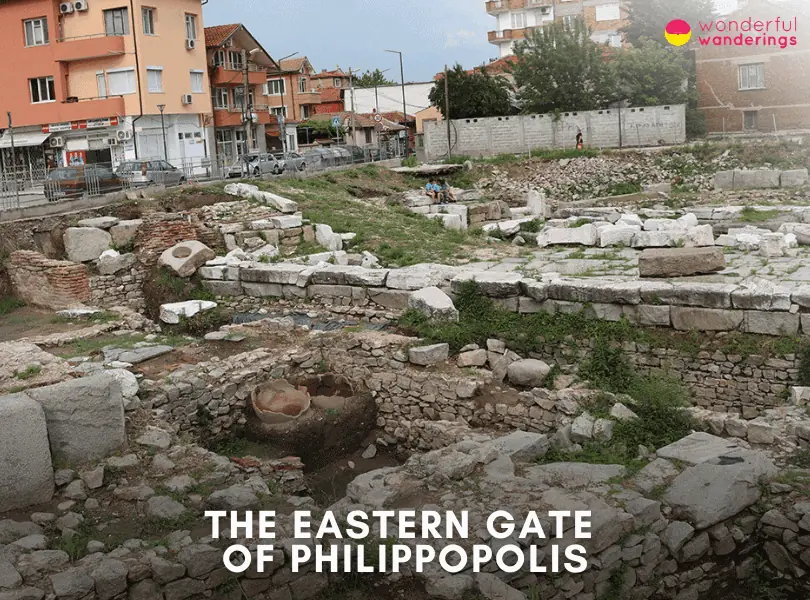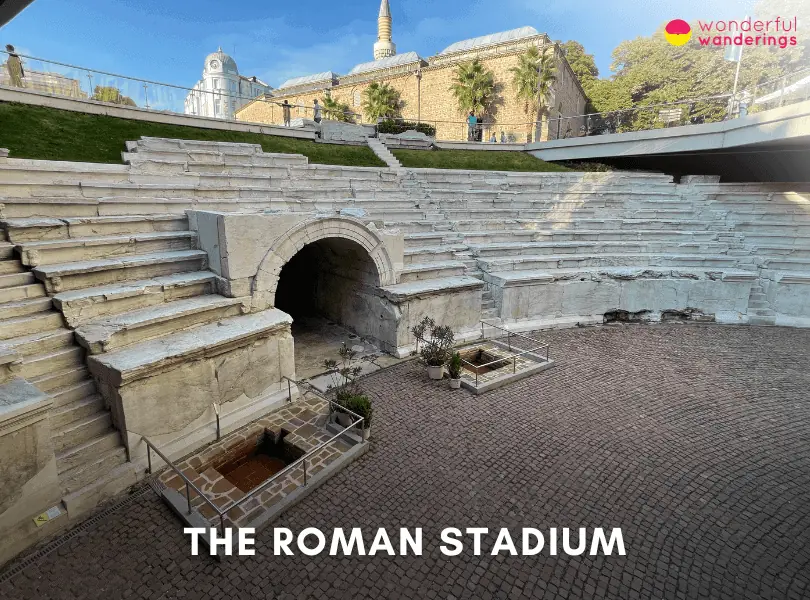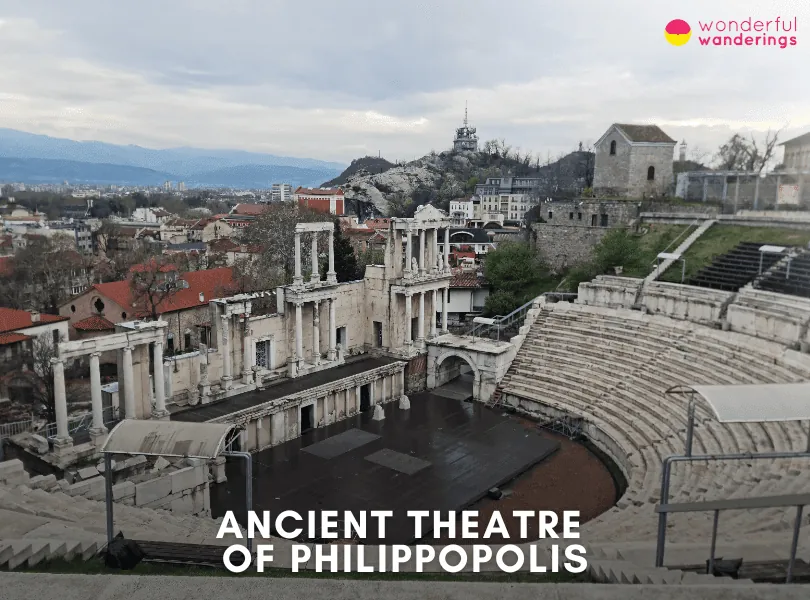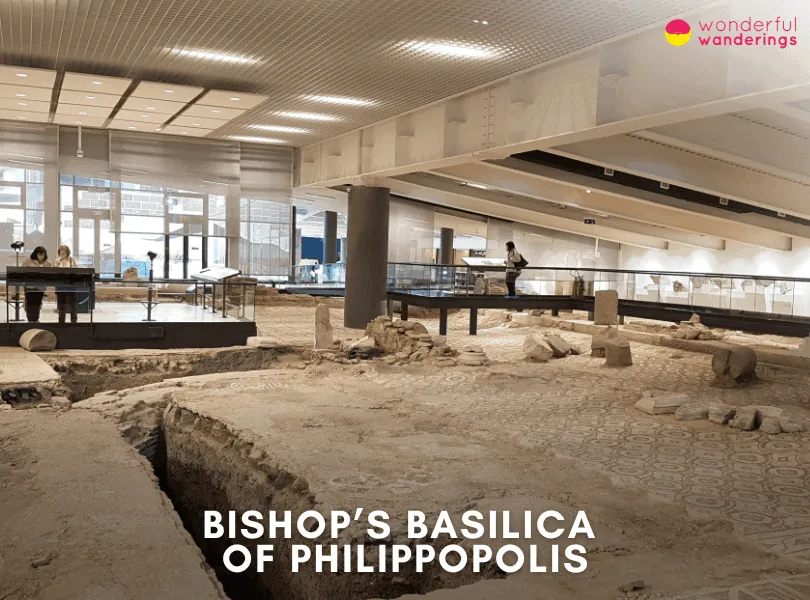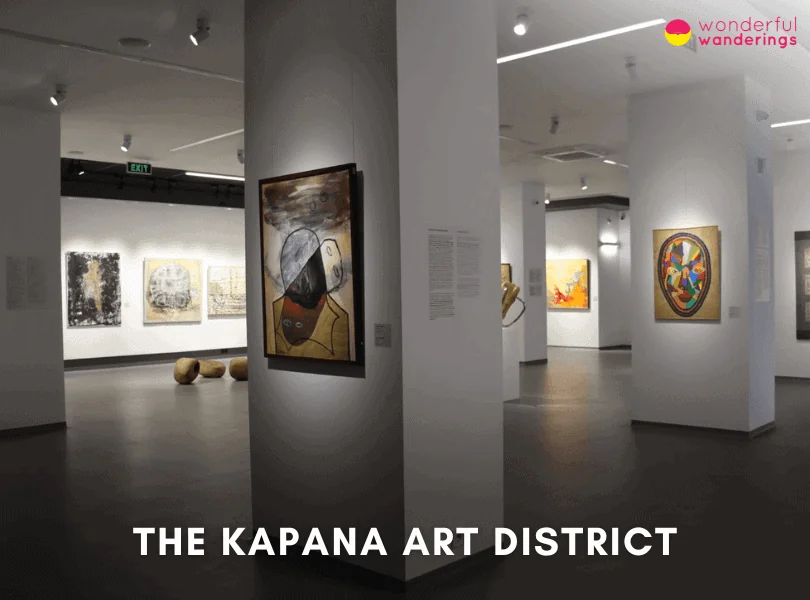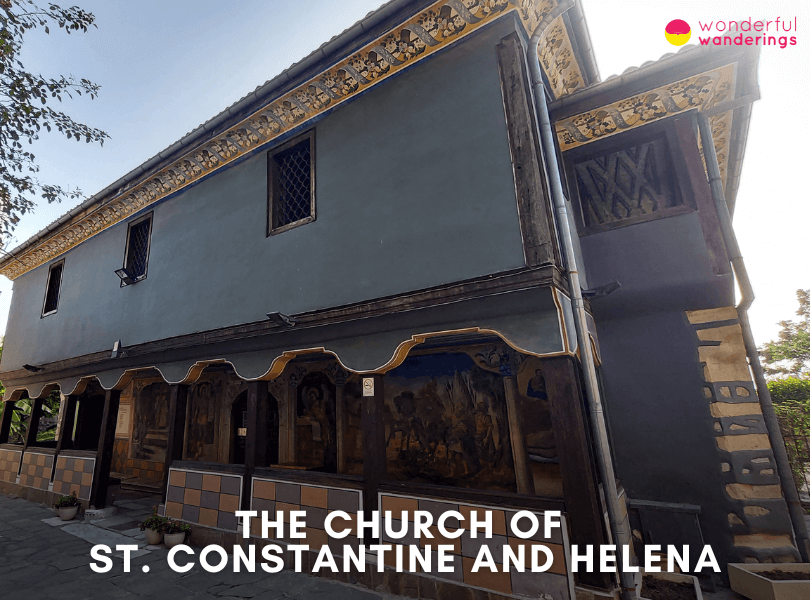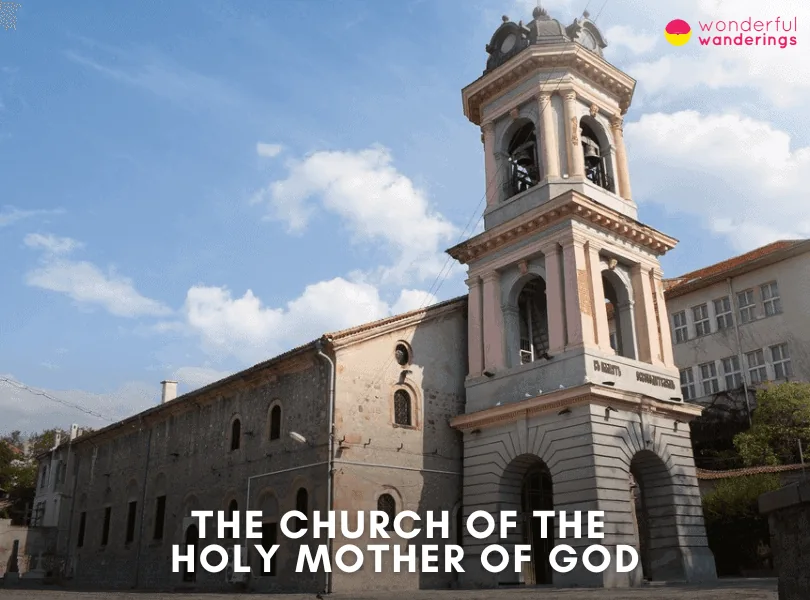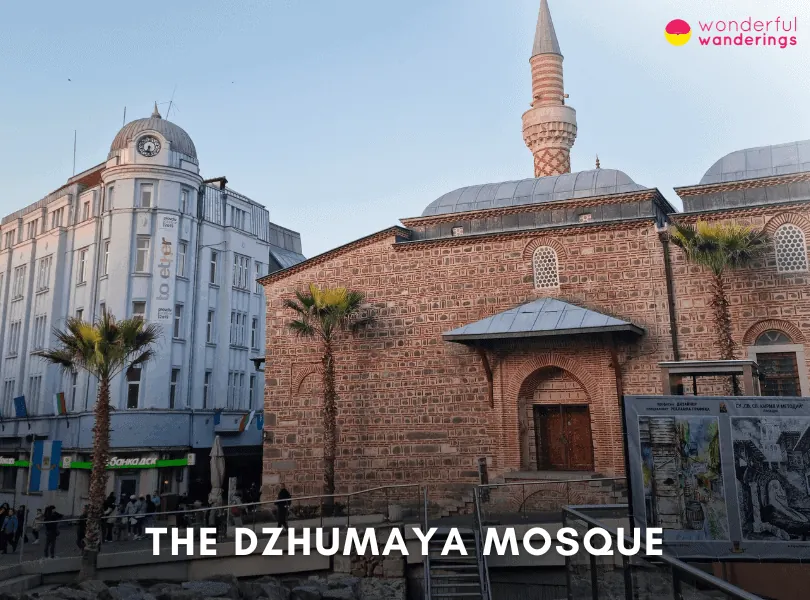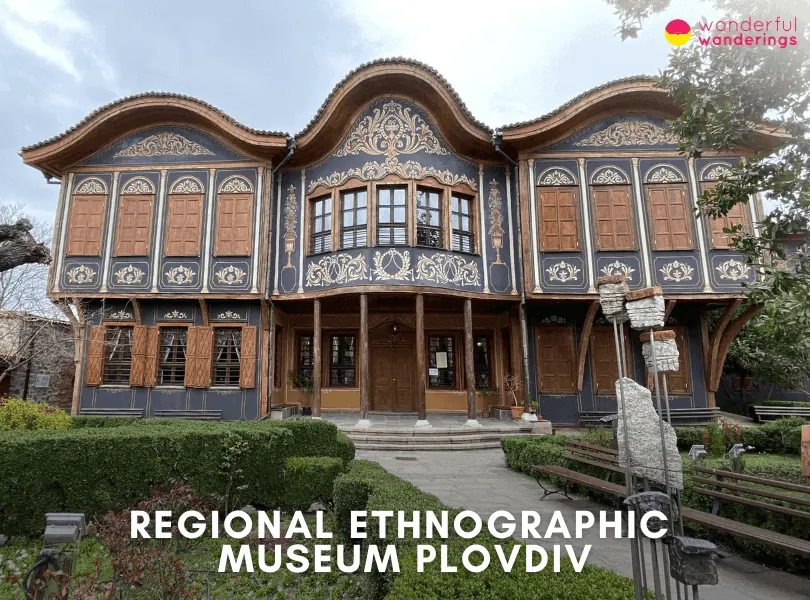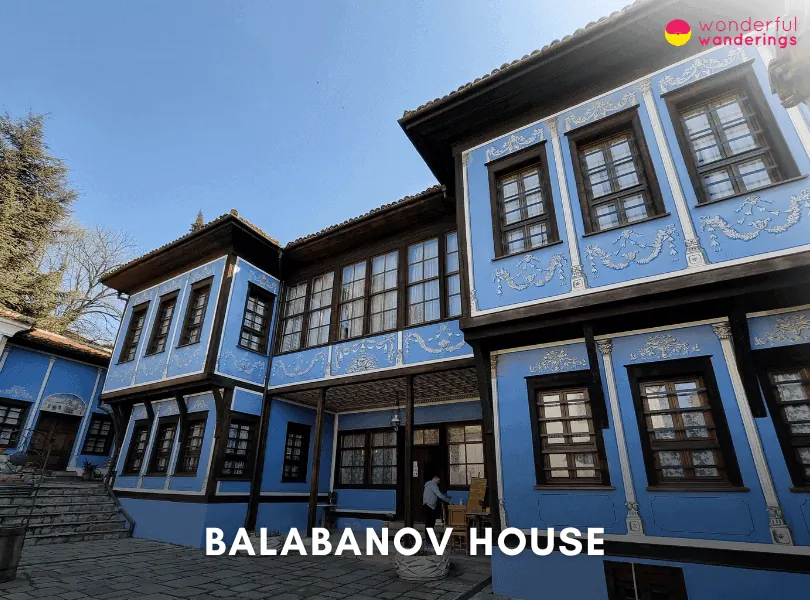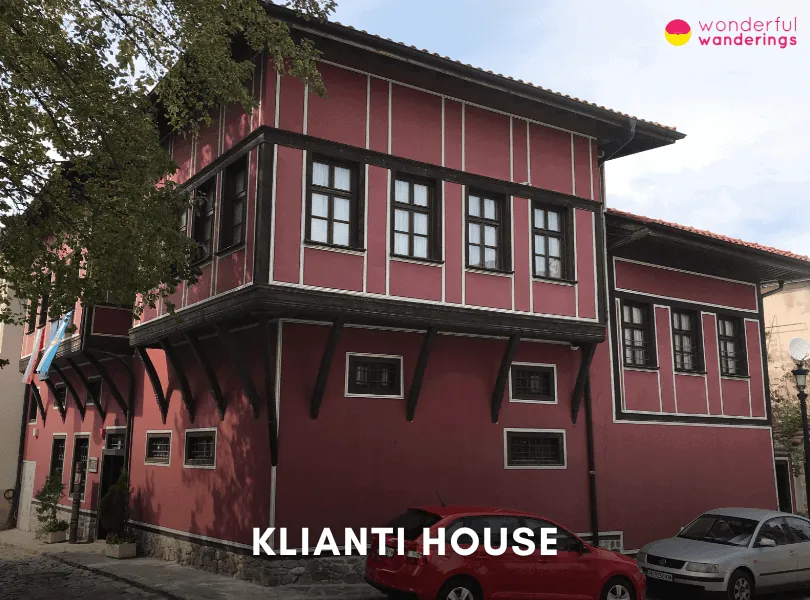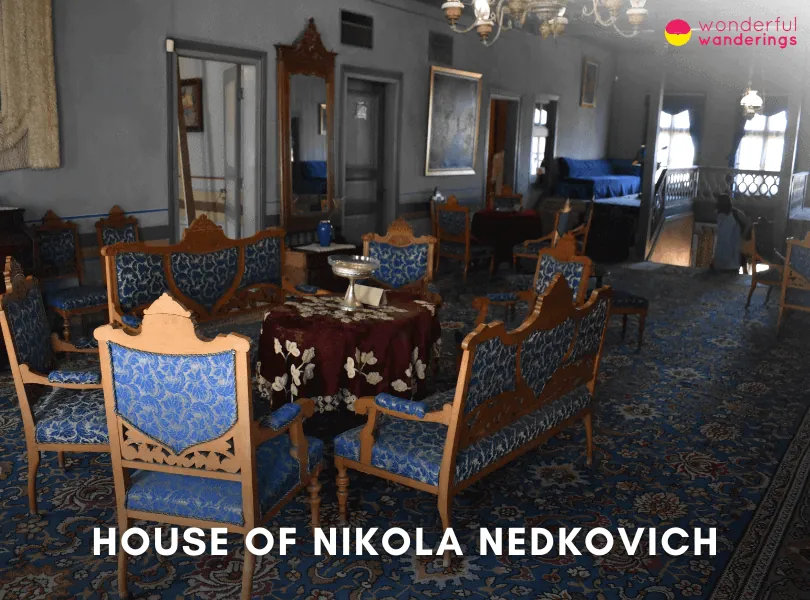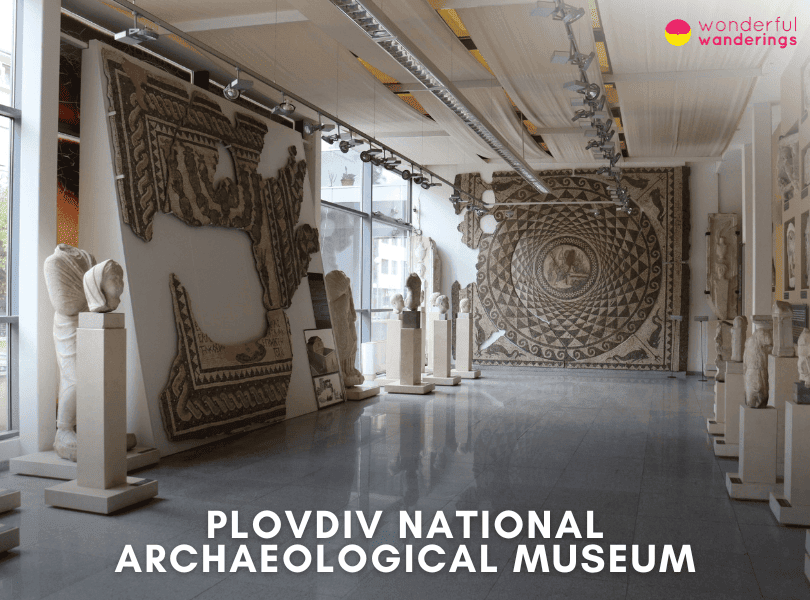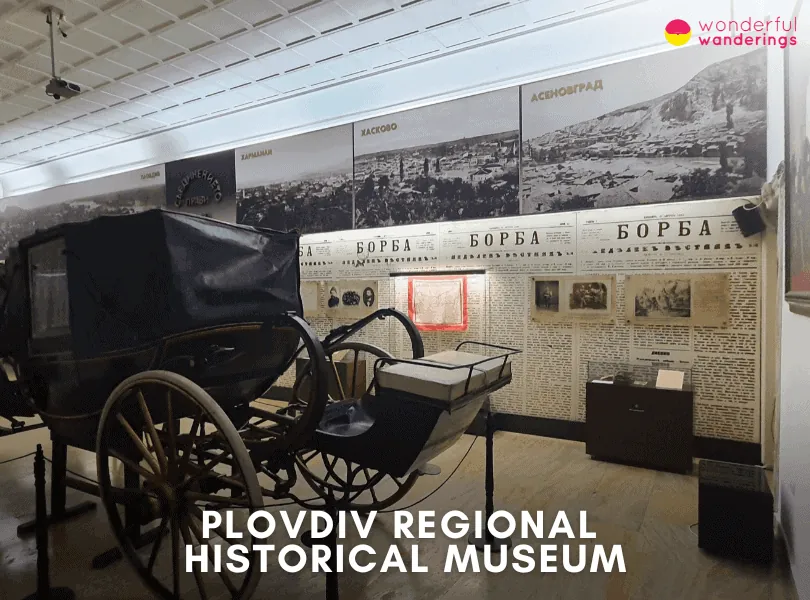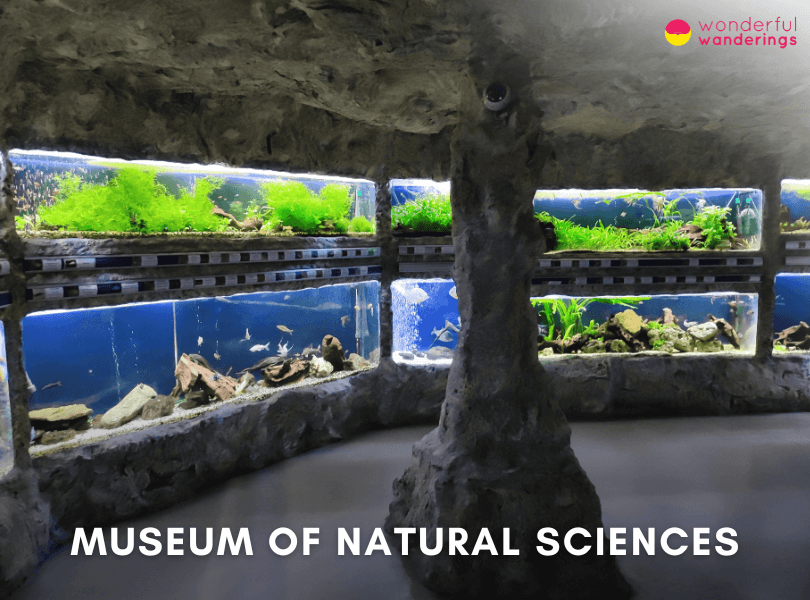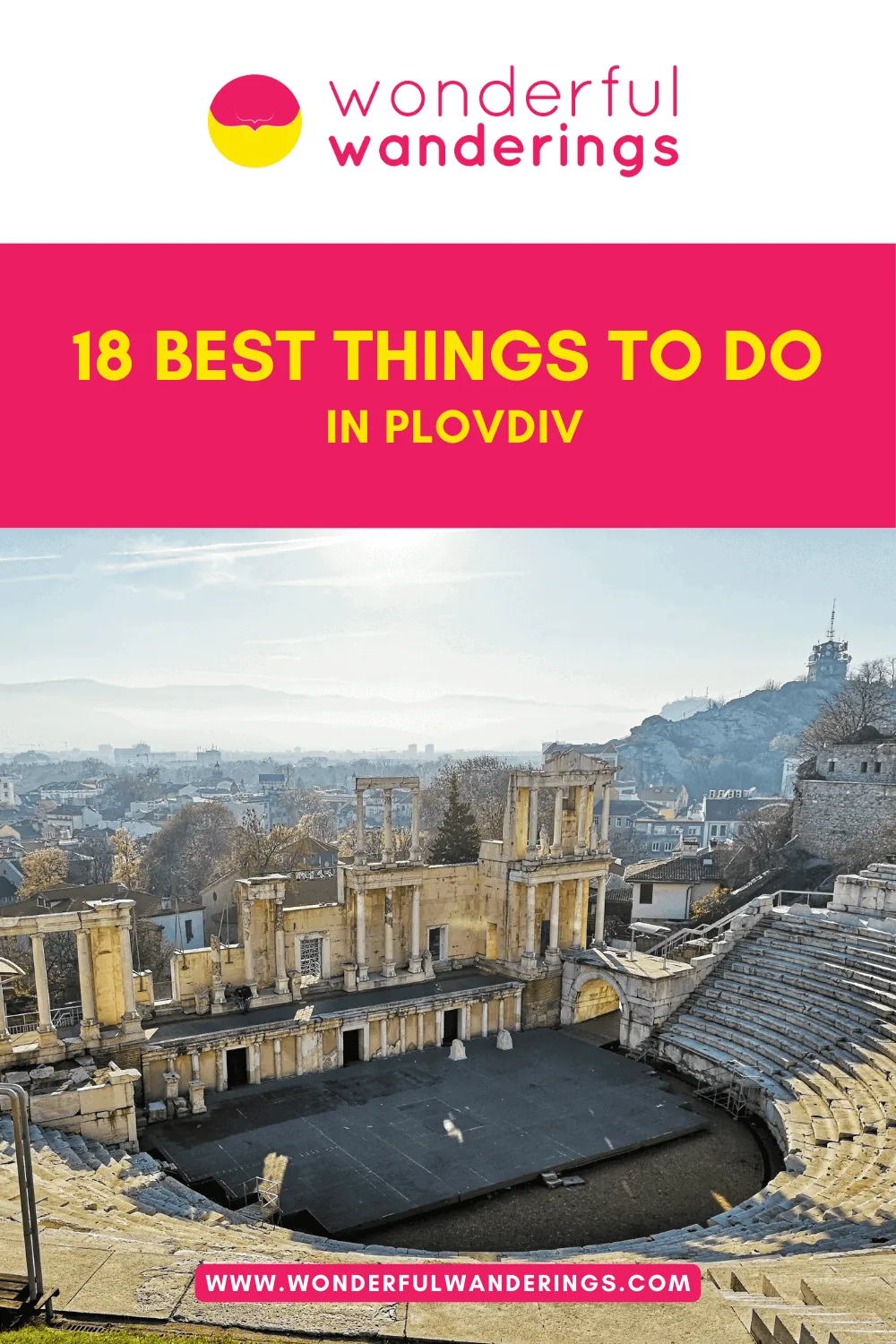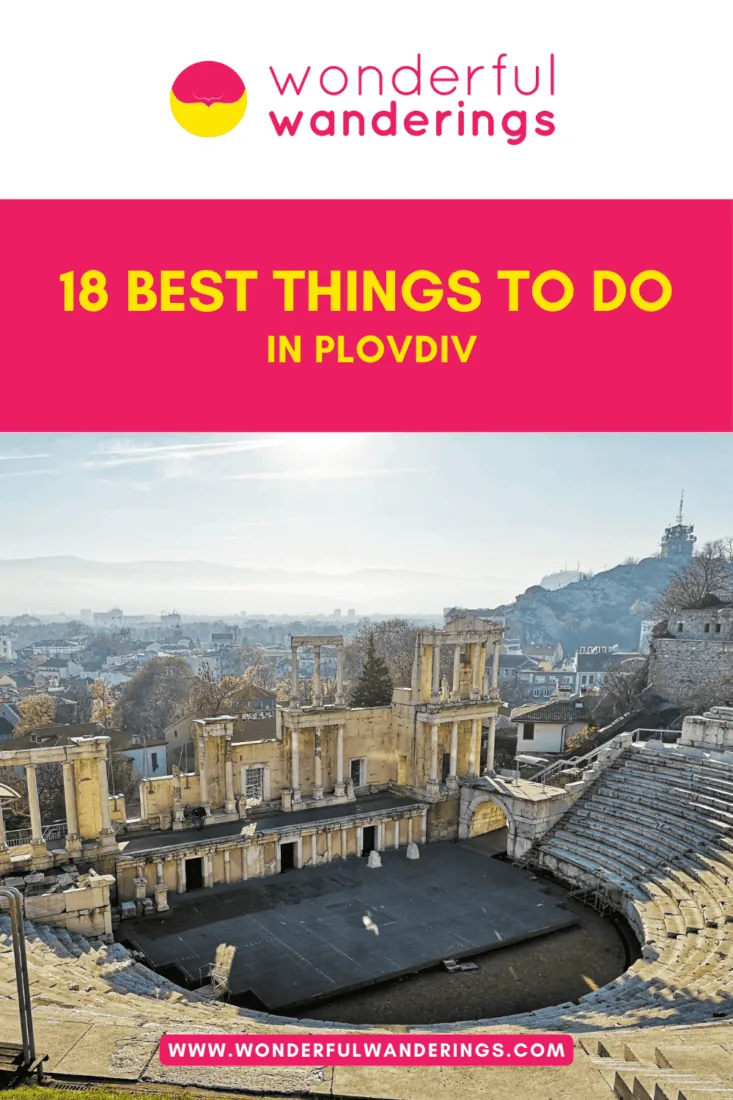Plovdiv is pronounced as ˈplôvˌdif. It is one of the oldest cities in Europe, with a history of over 8,000 years. The city has had many names, such as Eumolpia, Philippopolis, Pulpudeva, Trimontium and Filibe. The modern name Plovdiv comes from the Slavic word for “city on the river”. Plovdiv has many attractions that showcase its rich heritage and culture. The Old Town of Plovdiv is a UNESCO World Heritage Site, where visitors can see Roman ruins, colorful houses and cobblestone streets. The Roman amphitheater, built in the 2nd century AD, is one of the city’s main landmarks and still hosts concerts and events today. The Ethnographic Museum and the Regional Historical Museum display traditional costumes, crafts and artifacts from different ethnic groups in the region.
Plovdiv is also a lively and cosmopolitan city with an arts and music scene. The city was the European Capital of Culture in 2019 and annually hosts various festivals and exhibitions. The city has numerous galleries, theaters and music venues, attracting artists and performers worldwide. The Plovdiv International Fair is one of Southeast Europe’s oldest and largest trade fairs, showcasing the region’s economic vitality. Plovdiv has a temperate continental climate, with cold winters and hot summers. The average temperature in January is 1.3 ℃ (34.4 ℉) and in August is 24.2 ℃ (75.6 ℉). The city receives 500 millimeters (19.7 inches) of rainfall per year, with May being the wettest month. The city has 2,340 hours of sunshine per year, with July being the sunniest month.
Listed below are the best things to do in Plovdiv.
- Plovdiv Old Town. Plovdiv Old Town is a historical and architectural reserve in Plovdiv, Bulgaria. It covers three hills. Nebet Tepe, Dzhambaz Tepe and Taksim Tepe. It showcases the culture and architecture of different periods, from prehistoric times to the present. Plovdiv Old Town has been a UNESCO World Heritage tentative site since 2004.
- The Medieval Hisar Kapia Gate. The Medieval Hisar Kapia Gate in Plovdiv is a historical attraction that dates back to the 11th century AD. It is one of the three entrances to the ancient acropolis of Plovdiv, the second-largest city in Bulgaria. The gate was built over the foundations of a Roman gate in the 2nd century AD and reflected the architectural style of the Second Bulgarian Empire.
- Nebet Tepe. Nebet Tepe is one of the hills in Plovdiv, Bulgaria, where the ancient town was founded. It is considered the birth certificate of Plovdiv, as it contains the oldest evidence of human settlement in the area, dating back to 4000 BC. Nebet Tepe was first inhabited by Thracians then conquered by Philip II of Macedon and the Roman Empire.
- The Eastern Gate Of Philippopolis. The Eastern Gate of Philippopolis was one of the three entrances to the ancient city of Plovdiv, located in present-day Bulgaria. It was built on the main road that connected Philippopolis to Byzantium, the capital of the Eastern Roman Empire. The gate symbolized the city’s prosperity and importance in the region.
- The Roman Stadium. The Roman Stadium in Plovdiv is an ancient sports arena built in the 2nd century AD during the Roman imperial period. It is one of the largest and best-preserved buildings from that time in the Balkan peninsula. The stadium was located in the city of Philippopolis, which was the capital of the Roman province of Thracia.
- Ancient Theatre of Philippopolis. The Ancient Theatre of Philippopolis is one of the world’s best-preserved ancient Roman theatres. It is located in the city center of modern Plovdiv, Bulgaria, which was once the ancient city of Philippopolis. The theatre was built in the 1st century AD, probably during the reign of Emperor Trajan.
- Bishop’s Basilica of Philippopolis. The Bishop’s Basilica of Philippopolis is a large and ancient Christian church in Plovdiv, Bulgaria. It was built in the late 4th or early 5th century, shortly after Christianity became the Roman Empire’s official religion. The basilica is famous for its colorful and intricate floor mosaics, which cover an area of more than 2000 square meters (21528 square feet). The mosaics depict scenes and symbols from the Bible, animals, plants and geometric patterns.
- The Kapana Art District. The Kapana Art District is a creative and cultural hub in Plovdiv, Bulgaria. It is located in the city’s historical center, near the main attractions and landmarks. The name Kapana means “the trap” in Bulgarian, as the district has many narrow, winding streets that can easily confuse visitors.
- The Church Of St. Constantine And Helena. The Church Of St. Constantine And Helena is in Plovdiv, Bulgaria. It is one of the oldest churches in the city. It dates back to the fourth century CE when it was built on the site of an ancient pagan temple. The church honors Emperor Constantine the Great and his mother, Helena, who were influential in the spread of Christianity in the Roman Empire.
- The Church Of The Holy Mother Of God. The Church Of The Holy Mother Of God is a common name for many churches dedicated to Mary, the mother of Jesus Christ. Mary is also called Theotokos, which means “God-bearer” in Greek. The Church Of The Holy Mother Of God celebrates the role of Mary in the plan of salvation and her unique relationship with her son, who is both true God and true man.
1. Plovdiv Old Town
Plovdiv Old Town is a historical and architectural reserve in Plovdiv, Bulgaria. It covers three hills. Nebet Tepe, Dzhambaz Tepe and Taksim Tepe. It showcases the culture and architecture of different periods, from prehistoric times to the present. Plovdiv Old Town has been a UNESCO World Heritage tentative site since 2004. The Old Town has many ancient monuments that testify to its rich past. Some of the most notable ones are the Roman theatre, the Hisar Kapia gate, the Eastern gate of Philippopolis and the stone walls on Nebet Tepe. The Roman theatre, built in the 2nd century AD, is one of the best-preserved ancient theatres in the world. It can host up to 7000 spectators and is still in use today. The Hisar Kapia gate, built in the 11th century AD, is one of the three entrances to the acropolis of ancient Philippopolis. The Eastern gate, built in the 2nd century AD and rebuilt in the 4th century AD, was the main entrance to the city from the direction of Byzantium.
The Old Town also features many revival houses that reflect Plovdiv’s economic and cultural prosperity in the 18th and 19th centuries. These houses are characterized by symmetrical facades, colorful decorations, spacious courtyards and rich interiors. Some of the most famous ones are the Kuyumdzhioglu House, the Georgiadi House, the Nedkovic House, the Hindliyan House and the Balabanov House. Most of these houses are now museums, galleries or hotels. The Old Town is a place where visitors can enjoy the atmosphere of the past and the present. The cobblestone streets, the fig trees, the fountains and the churches create a unique beauty. The Old Town is also a center of cultural events, such as festivals, concerts, exhibitions and performances. Some venues for these events are the Roman Theatre, the Lamartin House, the Zlatyu Boyadzhiev House and the Georgi Bozhilov House.
The Old Town is easily accessible by public transport, car or on foot. It is located in the center of Plovdiv, 2 kilometers (1.2 miles) from the central railway station and 15 kilometers (9.3 miles) from the airport. The entrance fee to the Old Town is 2.5€ ($2.73, £2.18) for adults and 1.25€ ($1.36, £1.09) for students and seniors. The ticket includes access to all the museums and monuments in the reserve.
2. The Medieval Hisar Kapia Gate
The Medieval Hisar Kapia Gate in Plovdiv is a historical attraction that dates back to the 11th century AD. It is one of the three entrances to the ancient acropolis of Plovdiv, the second-largest city in Bulgaria. The gate was built over the foundations of a Roman gate in the 2nd century AD and reflected the architectural style of the Second Bulgarian Empire. The Medieval Hisar Kapia Gate is located in the old town of Plovdiv, which is a UNESCO World Heritage Site. The old town is a cultural and artistic center with many museums, galleries, churches and monuments. The gate is surrounded by houses from the Revival Period, which were built into the walls of the former fortress in the 17th and 18th centuries.
The Medieval Hisar Kapia Gate is named after the Turkish word for “castle gate”, as it was part of the city’s defensive system during the Ottoman rule. The gate has a semicircular arch, which is made of stones and bricks filled with white mortar. The gate is 11 meters high and 3 meters wide and has a small window on the top. The Medieval Hisar Kapia Gate is open to visitors daily and has no entrance fee. Visitors can walk through the gate and admire its medieval construction and history. The gate also offers a panoramic view of the city and the Rhodope Mountains. The gate is a popular spot for taking photos and selfies.
The Medieval Hisar Kapia Gate is accessible by public transportation, as it is close to the main bus and train stations in Plovdiv. The gate is also within walking distance from other attractions in the old town, such as the Roman Theatre, the Ethnographic Museum and the Nebet Tepe Hill. The gate is 2 kilometers (1.2 miles) from the city center and 15 kilometers (9.3 miles) from the Plovdiv Airport.
3. Nebet Tepe
Nebet Tepe is one of the hills in Plovdiv, Bulgaria, where the ancient town was founded. It is considered the birth certificate of Plovdiv, as it contains the oldest evidence of human settlement in the area, dating back to 4000 BC. Nebet Tepe was first inhabited by Thracians then conquered by Philip II of Macedon and the Roman Empire. As the town grew, Nebet Tepe became the citadel of the town’s acropolis or the highest and most fortified part of the town. Nebet Tepe has a rich and diverse history, spanning different eras and civilizations. It has remains of city walls, towers, ancient buildings and a unique postern or a secret tunnel, from Roman times. The postern was built in the 6th century AD by Emperor Justinian and is thought to have led to the banks of the Maritsa River. Some historians believe that the Apostle Paul walked through this tunnel. The hill also has a large water reservoir from the Roman period, which was used to supply water to the town.
The name Nebet Tepe comes from the Turkish words nevbet and tepe, meaning the hill of the guards. It is assumed that the garrison guarded the town on the hill. The hill also has another name in ancient times. the hill of Musaeus. This name is associated with the Thracian Musaeus, the most talented student of Orpheus, the legendary poet and musician. Experts are still exploring and studying the archaeological complex on Nebet Tepe. Most secrets and mysteries are hidden under the surface, waiting to be discovered. The hill has witnessed many changes and events in the history of Plovdiv, from its foundation to its modern development. It is a testimony of the town’s long and rich heritage.
4. The Eastern Gate Of Philippopolis
The Eastern Gate of Philippopolis was one of the three entrances to the ancient city of Plovdiv, located in present-day Bulgaria. It was built on the main road that connected Philippopolis to Byzantium, the capital of the Eastern Roman Empire. The gate symbolized the city’s prosperity and importance in the region. The Eastern Gate of Philippopolis was first constructed in the 2nd century AD, during the reign of Emperor Hadrian, who visited Philippopolis in 123 AD. It was originally a marble triumphal arch that celebrated his arrival and the city’s loyalty to Rome. The arch was decorated with sculptures and inscriptions that praised the emperor and his achievements.
In the 4th century AD, the Eastern Gate of Philippopolis was completely rebuilt and enlarged as part of the city’s fortification system. The new gate had one wide central entrance and two narrower side entrances flanked by two watch towers. The gate was made of stone and brick and had a defensive function against possible attacks. The gate also had a ceremonial role, as it marked the entrance to the city’s main street, which was lined with colonnades and porticoes. The street that led to the Eastern Gate of Philippopolis was the widest and most elaborate in the city. It was 13.2 meters (43 feet) wide and covered with large slabs of syenite, a hard and durable rock. The street had sidewalks, each 2.6 meters (8.5 feet) wide, paved with limestone. The street was also filled with columns and Corinthian capitals, which were richly decorated with floral and geometric motifs.
The buildings surrounding the Eastern Gate of Philippopolis were also impressive and elegant. They were built in the 4th century AD and had porticoes in the Corinthian style. These buildings’ purpose is unclear, but some scholars suggest that they were either barracks or infirmaries, serving the needs of the soldiers and travelers. The buildings and the gate formed a complex that reflected the city’s wealth and status. The Eastern Gate of Philippopolis and the street were used until the 5th century AD when they were partially repaired and modified. After that, they gradually fell into decay and were buried under the soil. The gate was rediscovered in the 1970s during archaeological excavations. The gate and the street are open to the public.
5. The Roman Stadium
The Roman Stadium in Plovdiv is an ancient sports arena built in the 2nd century AD during the Roman imperial period. It is one of the largest and best-preserved buildings from that time in the Balkan peninsula. The stadium was located in the city of Philippopolis, which was the capital of the Roman province of Thracia. The Roman Stadium was constructed under the reign of Emperor Hadrian, who ruled from 117 to 138 AD. It had a length of 240 meters (787.4 feet) and a width of 50 meters (164.1 feet) and could seat up to 30,000 spectators. The track length was one stadion, which was 180 meters (590.6 feet). The seats were made of solid marble blocks and the front parts were decorated with stylized lion paws.
The Roman Stadium was within the fortified city, close to the walls, which was unusual for Roman stadia. It was built in the natural bowl-shaped terrain between two hills, Taksim Tepe and Sahat Tepe. The stadium hosted games that demonstrated athletics and equestrian skills. The seats of honor for imperial visitors were reserved by inscriptions on the marble blocks. The Roman Stadium was unearthed in 1932 and restored in the 1970s. Excavations continued into the 21st century and the site was listed as a cultural value of national significance in 1995. The stadium today is located in the center of Plovdiv, under the main pedestrian street. The larger portion still lies beneath the buildings along the street and parts are visible in the basements of several shops.
The northern end of the Roman Stadium, the sphendone, is partially restored and is one of the city’s most recognizable landmarks. Visitors can dive underground to the original ancient town level and walk through part of the track, see the semicircular seats and the panoramic wall with a hypothetical reconstruction.
6. Ancient Theatre of Philippopolis
The Ancient Theatre of Philippopolis is one of the world’s best-preserved ancient Roman theatres. It is located in the city center of modern Plovdiv, Bulgaria, which was once the ancient city of Philippopolis. The theatre was built in the 1st century AD, probably during the reign of Emperor Trajan. The Ancient Theatre of Philippopolis has a semi-circular shape with an outer diameter of 80 meters (262.5 feet). It can host between 5,000 and 7,000 spectators. The seating section (cavea) is divided into two tiers by an aisle (diazoma). The stage (orchestra) has the shape of a horseshoe, 26.64 meters (87.4 feet) long. The stage building (scaenae frons) is a high wall with three floors and columns of different orders.
The Ancient Theatre of Philippopolis was used for various performances, such as drama, comedy and music. It was also a place for public meetings and ceremonies. The theatre was decorated with statues, reliefs and inscriptions. Some of them are still visible today. The Greek and Roman culture influenced the theatre and reflected Philippopolis’s prosperity and importance. The Ancient Theatre of Philippopolis was buried by a landslide in the 5th century AD. It remained hidden for centuries until it was discovered by accident in 1968. The Plovdiv Archaeological Museum excavated and restored the theatre from 1968 to 1979. The restoration was done with respect to the original design and materials.
The Ancient Theatre of Philippopolis is now a major tourist attraction and a cultural center of Plovdiv. It is part of Philippopolis’s ancient city, a UNESCO World Heritage Site. The theatre hosts various events, such as concerts, festivals and opera. It is also a venue for the International Folklore Festival and the Opera Open Festival. The Ancient Theatre of Philippopolis is open to visitors daily from 09.00 am to 05.00 pm. The entrance fee is 3.5€ ($3.82, £3.05). There are guided tours available in different languages. The theatre offers a stunning view of the city and the Rhodope Mountains. The theatre is a must-see for anyone who visits Plovdiv and wants to experience the ancient history and culture of the region.
7. Bishop’s Basilica of Philippopolis
The Bishop’s Basilica of Philippopolis is a large and ancient Christian church in Plovdiv, Bulgaria. It was built in the late 4th or early 5th century, shortly after Christianity became the Roman Empire’s official religion. The basilica is famous for its colorful and intricate floor mosaics, which cover an area of more than 2000 square meters (21528 square feet). The mosaics depict scenes and symbols from the Bible, animals, plants and geometric patterns. The Bishop’s Basilica of Philippopolis is located near the Forum Complex of ancient Philippopolis, the former center of the city. It has three naves, an apse, a narthex and an atrium. The basilica is 83 meters (272.3 feet) long and 36 meters (118.1 feet) wide, making it the largest early Christian basilica in Bulgaria and one of the largest in the Balkans. The basilica was the seat of the bishop of Philippopolis and the main place of worship for the local Christian community.
The Bishop’s Basilica of Philippopolis was discovered during rescue archaeological excavations from 1982 to 1986. Only half of the building was investigated until 2002 when the full extent of the basilica was revealed. The basilica was in poor condition, as it had been damaged by earthquakes, floods, fires and human activities over the centuries. The basilica was also partially buried under modern buildings and streets, which had to be removed or relocated. The Bishop’s Basilica of Philippopolis was restored and conserved with the help of the America for Bulgaria Foundation, a non-profit organization that supports cultural heritage projects in Bulgaria. The restoration project lasted from 2016 to 2021 and cost €7.5 million ($8.9 million, £6.4 million). The project aimed to preserve the basilica’s original appearance and structure and protect the mosaics from further deterioration. The project also included the construction of a visitor center and a museum, which display the history and significance of the basilica and its mosaics.
The Bishop’s Basilica of Philippopolis was opened in April 2021 after 17 centuries of closure. The basilica is now a major tourist attraction and a cultural landmark of Plovdiv. The basilica is also a candidate for the UNESCO World Heritage List, representing a unique example of late antique art and architecture in the Roman province of Thrace. The basilica is part of a serial property that includes two other early Christian buildings with mosaics in Plovdiv. the Small Basilica and the Late-Antique Irene Building. The Bishop’s Basilica of Philippopolis is open daily from 10.00 am to 06.00 pm, except on Mondays. The entrance fee is 5€ ($5.45, £4.35) for adults and 2€ ($2.18, £1.74) for students and seniors. The basilica offers guided tours, audio guides and interactive exhibits for visitors. The basilica also hosts various cultural events, such as concerts, lectures and workshops. The basilica is a place of beauty, history and spirituality, where visitors can admire the ancient mosaics and learn more about the early Christian heritage of Plovdiv.
8. The Kapana Art District
The Kapana Art District is a creative and cultural hub in Plovdiv, Bulgaria. It is located in the city’s historical center, near the main attractions and landmarks. The name Kapana means “the trap” in Bulgarian, as the district has many narrow, winding streets that can easily confuse visitors. The Kapana Art District has a long and rich history, dating back to the 15th century when it was a center for craftsmen and traders. It was home to various artisans, such as fur dressers, blacksmiths, tailors and goldsmiths. The district also had a diverse and multicultural population, with people from different ethnic and religious backgrounds.
In the 20th century, the Kapana Art District underwent several changes, as new buildings in Secession and Neoclassical styles replaced some of the old workshops. The district also faced neglect and decay, as many buildings were abandoned or demolished. In the 1970s, there were plans to transform the district into a modern trade center, but they were opposed by local architects who wanted to preserve its historical value. In the 21st century, the Kapana Art District experienced a revival due to the initiative of the Plovdiv 2019 Foundation, which aimed to develop the district as the first creative district in the country. The foundation supported the renovation of the buildings, pedestrianizing streets and establishing various cultural and artistic venues, such as galleries, studios, workshops, bars, restaurants and cafes.
The Kapana Art District today is a lively place, where visitors can enjoy the local and European cuisine, the cozy and friendly atmosphere and the diverse and innovative events. The district hosts festivals and special events throughout the year, such as Kapana Fest, One Design Week, One Architecture Week and One Dance Week. These events feature concerts, performances, screenings, presentations and exhibitions by local and international artists and creators.
9. The Church Of St. Constantine And Helena
The Church Of St. Constantine And Helena is in Plovdiv, Bulgaria. It is one of the oldest churches in the city. It dates back to the fourth century CE when it was built on the site of an ancient pagan temple. The church honors Emperor Constantine the Great and his mother, Helena, who were influential in the spread of Christianity in the Roman Empire. The Church Of St. Constantine And Helena has a long and unstable history. It was destroyed and rebuilt several times over the centuries. Its current structure was completed in 1832 with the help of local patriots. The church features a bell tower, a portico and a dome. The interior is decorated with frescoes and icons by famous Bulgarian painters, such as Zahari Zograf.
The Church Of St. Constantine And Helena is located on one of the fortified hills of Plovdiv, which offers a panoramic view of the city. The church is part of the Old Town, a historical and cultural district that preserves the architectural heritage of different periods and styles. The church is near the Roman Theatre, the Ethnographic Museum and the Great Basilica. The Church Of St. Constantine And Helena is open to visitors and worshippers. It holds regular services and celebrates the feast days of St. Constantine and St. Helena on May 21 and August 18. The church also hosts concerts, exhibitions and other cultural events. The church is a popular destination for tourists and pilgrims who admire its beauty and significance. The Church Of St. Constantine And Helena is a valuable cultural and historical asset. It is protected by the Bulgarian law as a cultural monument of national importance. It is also part of the UNESCO World Heritage Tentative List, recognizing its outstanding universal value.
10. The Church Of The Holy Mother Of God
The Church Of The Holy Mother Of God is a common name for many churches dedicated to Mary, the mother of Jesus Christ. Mary is also called Theotokos, which means “God-bearer” in Greek. The Church Of The Holy Mother Of God celebrates the role of Mary in the plan of salvation and her unique relationship with her son, who is both true God and true man. The Church Of The Holy Mother Of God has a long and rich history that dates back to the early centuries of Christianity. The first churches dedicated to Mary were built in the East, especially in Armenia, where she is considered the nation’s patroness. In the West, the feast of Mary, the Mother of God, was established on January 1, the octave of Christmas, by Pope Pius XI in 1931. The feast commemorates the dogma of Mary’s divine maternity, which was declared at the Council of Ephesus in 431.
The Church Of The Holy Mother Of God has various architectural styles, depending on the location and construction period. Some of the most common features are the dome, the cross, the iconostasis and the apse. The dome symbolizes the heaven and the earth, the cross represents the sacrifice and the resurrection of Christ, the iconostasis is a screen that separates the sanctuary from the nave and displays icons of Mary and the saints and the apse is a semi-circular niche that houses the altar and the tabernacle. The Church Of The Holy Mother Of God follows the liturgical traditions of the Eastern Orthodox, Oriental Orthodox, Eastern Catholic and some Anglican churches. The liturgy is the public worship of God, which includes prayers, hymns, readings and sacraments. The liturgy is celebrated in the people’s language, usually using incense, candles, bells and vestments. The liturgy is centered on the Eucharist, the sacrament of the body and blood of Christ, which is offered in memory of his death and resurrection.
The Church Of The Holy Mother Of God fosters a strong devotion to Mary, the Mother of God, who is honored as Christ’s first and best disciple. The devotion to Mary includes various practices, such as the rosary, the angelus, the akathist, the magnificat, the litany and the icons. The devotion to Mary also involves various forms of veneration, such as bowing, kissing, touching and offering flowers, candles and medals. The devotion to Mary is based on the belief that she intercedes for the faithful before her son and leads them to him. The Church Of The Holy Mother Of God is a universal name for many churches that honor Mary, the Mother of God, as the highest example of faith, hope and love. The Church Of The Holy Mother Of God is a witness to the mystery of the incarnation, the union of the divine and the human in Jesus Christ. The Church Of The Holy Mother Of God is a source of inspiration and guidance for Christians who seek to follow God’s will and share in his glory.
11. The Dzhumaya Mosque
The Dzhumaya Mosque is a historic mosque in Plovdiv, the second-largest city in Bulgaria. It is also known as the Friday Mosque or Cuma Camii in Turkish. The mosque is one of the oldest and largest Ottoman religious buildings in the Balkans. It is located in the center of Plovdiv, near the ancient Roman stadium and the amphitheater. The Dzhumaya Mosque was built in the 14th century, shortly after the Ottoman conquest of Plovdiv. It replaced the Sveta Petka Tarnovska Cathedral Church, which was demolished by the invaders. The mosque was renovated and expanded in the 15th century during the reign of Sultan Murad I. It has a rectangular shape, with a 33-meter (108.3 feet) by 27-meter (88.6 feet) prayer hall. It has nine domes and a minaret at the northeast corner of the main façade.
The Dzhumaya Mosque has a simple and elegant exterior, with stone and brick walls and arched windows. The interior is decorated with wall paintings from the late 18th and early 19th centuries. The paintings depict floral and geometric motifs and inscriptions from the Quran. The mosque also has a wooden pulpit, a marble mihrab and a chandelier. The mosque can accommodate up to 1,000 worshippers. The Dzhumaya Mosque is an active place of worship for the Muslim community in Plovdiv. It is open to visitors of all faiths, except during the prayer times. Visitors must remove their shoes and cover their heads before entering the mosque. Women are also advised to wear modest clothing that covers their arms and legs. Photography is allowed inside the mosque, but flash and tripods are prohibited.
The Dzhumaya Mosque is a cultural and historical landmark in Plovdiv. It is a testimony of the Ottoman influence and legacy in the city. It is also a symbol of the religious diversity and tolerance in Bulgaria. The mosque is part of the Old Town of Plovdiv, which is a UNESCO World Heritage Site. The mosque is surrounded by other attractions, such as the Ethnographic Museum, the Roman Forum and the Ancient Theatre. The Dzhumaya Mosque has also faced some challenges and threats in its history. In 2014, it was attacked by a mob of nationalists and hooligans who threw stones and firecrackers at the mosque. The attack was condemned by the authorities and the civil society and four people were sentenced for their involvement. The mosque was also damaged by an earthquake in 1928 and a fire in 1945. The mosque has been restored and preserved by the efforts of the government and the Muslim community.
12. Regional Ethnographic Museum Plovdiv
The Regional Ethnographic Museum Plovdiv is a museum that showcases the culture and traditions of the people of Plovdiv and its surroundings. It is the second-largest museum in Bulgaria and a popular destination for tourists and researchers. The museum was founded in 1917 and has a collection of over 60,000 artifacts related to various aspects of life, such as agriculture, crafts, clothing, furniture, music and religion. The Regional Ethnographic Museum Plovdiv is located in the Old Town of Plovdiv, a historic area that dates back to ancient times. The museum occupies the Kuyumdzhioglu House, a national cultural monument built in 1847 by a wealthy merchant named Argir Hristov Kuyumdzhioglu. The house is a fine example of the Baroque architecture of Plovdiv in the 19th century. It has a symmetrical facade, a spacious courtyard and 12 rooms decorated with floral motifs and wood-carved ceilings.
The Regional Ethnographic Museum Plovdiv has six permanent exhibitions, each occupying a separate room in the house. The first exhibition is the Parlour, which displays the furniture and interior of a typical urban home in Plovdiv in the 19th century. The second exhibition is the Agriculture Hall, which presents the tools and techniques used by the farmers in the region. The third exhibition is the Animal Husbandry Hall, which shows the breeds and products of the domestic animals raised by the locals. The fourth exhibition is the Traditional Crafts Hall, which features Plovdiv’s most common and important crafts, such as abba making, gaytan making and pottery. Abba is a coarse woolen fabric for making rugs, bags and clothing. Gaytan is a colorful braid used for decorating clothes and accessories. Pottery is one of the region’s oldest and most widespread crafts, producing various types of vessels and utensils. The fifth exhibition is the Fabrics and Clothing Hall, which displays the costumes and accessories worn by the people of Plovdiv on different occasions and seasons. The exhibition illustrates the diversity and richness of the local textile culture, influenced by various ethnic and religious groups. The sixth exhibition is the Musical Instruments Hall, which exhibits the musical instruments used by the people of Plovdiv for entertainment and expression. The exhibition includes string, wind, percussion instruments and examples of folk songs and dances.
The Regional Ethnographic Museum Plovdiv is a place for education, research and preservation of the region’s cultural heritage. The museum organizes various events and activities, such as lectures, workshops, festivals and exhibitions, to promote and share the knowledge and values of the local culture. The museum is open to visitors from Tuesday to Sunday, from 09.00 am to 06.00 pm. The entrance fee is 2.5€ ($2.73, £2.18).
13. Balabanov House
The Balabanov House is a historical building in Plovdiv, Bulgaria. It is located in the Old Town, a cultural and architectural heritage site. The house is a museum and a venue for various cultural events. The Balabanov House was built in the early 19th century by Hadzhi Panayot Lampsha, a wealthy merchant and a member of the kaftandziyski guild. He was one of the most famous Plovdiv traders in the mid-19th century. The house had three owners and was named after its last owner, Luka Balabanov, another prominent merchant.
The Balabanov House is a remarkable example of Bulgarian Renaissance architecture. It has a symmetrical design and a rich decoration of wood-carved ceilings, plaster ornaments and wall paintings. The house has two floors and a basement. The ground floor has a long veranda with a high ceiling and some farming and household premises. The upper floor has a large glassy salon and four rooms with antique furniture and fabrics. The Balabanov House was demolished in the 1930s and was reconstructed in the 1970s by the architect Hristo Peev, based on photographic material and schemes. He was the most prominent researcher of the Renaissance houses in Plovdiv. The reconstruction preserved the original style and appearance of the house.
The Balabanov House is now a museum and a cultural center. The ground floor features a permanent exhibition of modern Bulgarian art. The upper floor exhibits a Revival period interior and hosts various cultural events, such as exhibitions, literature premieres, chamber music concerts, theater performances and meetings. The basement has two halls for temporary art exhibitions. The Balabanov House is open daily to visitors from 09.00 am to 05.30 pm. The entrance fee is 2.5€ ($2.73, £2.18). Students and retired people can visit for free every first Thursday of the month. The house is also part of the Plovdiv City Card, which offers discounts and free access to many attractions in the city.
14. Klianti House
Klianti House is a historic building in the Old Town of Plovdiv, Bulgaria. It is one of Bulgarian Revival architecture’s oldest and most beautiful examples. It was built in the 18th century and renovated in 1817 by the same craftsmen who constructed the church of St. Virgin Mary. It has a rich and colorful interior decoration, with mural paintings, wooden ceilings and carved doors. Klianti House has two floors and a covered yard. The ground floor was used for storage and service rooms, while the first floor was the living area. The first floor has three rooms and a spacious porch with many windows, called hayet. The porch leads to a low storage room called himala, which is only 1.6 meters (5.2 feet) high. The two main rooms on the first floor have elaborate wall and ceiling ornaments with floral motifs, bouquets and vases. On the walls of one of the rooms are unique landscapes of Vienna and Constantinople, painted in 1817.
Klianti House has been a cultural monument of national importance since 1995. It is part of the Architectural and Historical Reserve of Ancient Plovdiv, which preserves the heritage of different periods and cultures. The house is located on Knyaz Tseretelev Street, near other notable buildings from the Revival period, such as Lamartine House, Antov House and the Yellow School. Klianti House is open to visitors daily, from 09.00 am to 06.00 pm, with a lunch break from 01.00 pm to 01.30 pm. The entrance fee is 2.5€ ($2.73, £2.18) for adults and 1.25€ ($1.36, £1.09) for students and seniors. The house also hosts exhibitions, concerts, talks and other cultural events. Visitors can enjoy the house’s authentic atmosphere and artistic beauty and learn more about its history and significance.
Klianti House is a remarkable example of the Plovdiv House, a specific architectural type that developed in the city during the Revival period. The Plovdiv House is characterized by its asymmetrical shape, adaptation to the hilly terrain, spacious porch and rich decoration. The Plovdiv House reflects its owners’ social and economic status, artistic taste and cultural identity.
15. House Of Nikola Nedkovich
The House Of Nikola Nedkovich is a historic building in Plovdiv, Bulgaria. It was built in 1863 by Nikola Nedkovich, a wealthy fabric merchant and a prominent figure in the Bulgarian National Revival. The house is a fine example of the European classicism style, with some elements of the Italian Renaissance. The house has a richly decorated façade, a small garden and a patio that leads to the residence. The House Of Nikola Nedkovich has two floors, each with a symmetrical plan. The ground floor has four rooms with geometrically carved ceilings and ornate murals. The rooms have different functions and colors. the green room is for women, the red room is for guests, the purple room is for dining and the orange room is for sitting. The rooms facing the yard have paintings of various European cities. The upper floor has an office, a bedroom and a bachelorette room.
The House Of Nikola Nedkovich has some interesting architectural features, such as an underground tunnel that connects the cellar with the street and a covered passage that links the kitchen with the main building. The house also has a collection of period furniture and personal belongings of the Nedkovich family. Some items include a piano, a gramophone, a sewing machine and a chess set. The House Of Nikola Nedkovich is now a museum that showcases the urban lifestyle of the rich Plovdiv families in the 19th century. It is part of the Old Plovdiv Architectural and Historical Reserve, which preserves the city’s cultural heritage. The house is also a popular venue for hosting cultural events and activities throughout the year.
The House Of Nikola Nedkovich is open to visitors from Tuesday to Saturday, with different working hours depending on the season. The entrance fee is 2.5€ ($2.73, £2.18) for adults, 1.25€ ($1.36, £1.09) for students and retired people and free for children under 7 years old. The house offers guided tours, audio guides and brochures in different languages.
The House Of Nikola Nedkovich is located at 3 Tsanko Lavrenov Street, in the heart of the Old Town. It is 2 kilometers (1.2 miles) from the central railway station and 15 kilometers (9.3 miles) from the Plovdiv airport. It is accessible by public transport, taxi or walking. The house is near other attractions, such as the Ancient Theatre, the Ethnographic Museum and the Roman Stadium.
16. Plovdiv National Archaeological Museum
The Plovdiv National Archaeological Museum is one of Bulgaria’s oldest and most important cultural institutions. It was founded in 1882 as an archaeological and numismatic office and later became a museum in the 1920s. The museum is located in the center of Plovdiv, the second-largest city in Bulgaria and one of the oldest cities in Europe. The Plovdiv National Archaeological Museum displays over 100,000 artifacts from prehistoric times to the Middle Ages, covering Plovdiv’s rich and diverse history and region. Plovdiv was the ancient city of Philippopolis, a major center of the Thracian, Greek, Roman, Byzantine, Ottoman and Bulgarian civilizations. The museum showcases the cultural heritage of these peoples through various exhibits, such as pottery, jewelry, tools, coins, sculptures, frescoes and more.
The National Archaeological Museum’s highlight is the collection of ancient Greek art dating back to the 5th and 4th centuries BC. These include silver vessels, gold jewelry and bronze figurines found in the Thracian burial mounds near the villages of Duvanliy and Chernozem. These artifacts reveal the high level of craftsmanship and artistic expression of the ancient Thracians, who were influenced by Greek culture and religion. The other notable National Archaeological Museum exhibit is the collection of Roman medical instruments discovered in various Philippopolis tombs. These include scalpels, forceps, probes, hooks and needles. These instruments demonstrate the advanced knowledge and skills of the Roman doctors, who practiced various types of surgery and medicine in the ancient city.
The National Archaeological Museum features a large collection of medieval artifacts dating from the 11th to the 13th centuries. These include tools, jewelry, glass bracelets, necklaces, ceramics and stone sculptures. These objects reflect the life and culture of the medieval Bulgarians, who established the Second Bulgarian Empire and fought against the Byzantine and Ottoman invasions. The National Archaeological Museum has a special hall dedicated to its history, showing documents and pictures of its founders, directors and researchers. The museum also has a numismatic fund that contains about 60,000 coins, ranging from the 6th century BC to the 20th century. The museum also sells visitors informational materials, books and souvenirs.
17. Plovdiv Regional Historical Museum
The Plovdiv Regional Historical Museum is a museum in Plovdiv, Bulgaria, that covers the city’s history from the 15th century to the present day. The museum was established in 1951 and has three departments, each in a different historic building. The museum also manages four expositions that showcase various aspects of Plovdiv’s past and present. The Bulgarian National Revival Exposition is housed in the Georgiadi House, a former residence of a Greek merchant from Thessaloniki. The house was built in 1846 and has an area of 825 square meters (8880.3 square feet). The exposition traces Plovdiv’s social, economic and cultural development during the Ottoman rule and the struggle for national liberation and education. The exposition also features a display about Lady Strangford, a British philanthropist who helped the victims of the Russo-Turkish War of 1877 to 1878.
The Plovdiv Regional Historical Museum’s Unification of Bulgaria exposition is dedicated to the role of Plovdiv in the events of September 6, 1885, when the autonomous province of Eastern Rumelia joined the Principality of Bulgaria. The exposition is in the former Eastern Rumelian Regional Assembly building, designed by the Italian architect Pietro Montani and built between 1883 and 1885. The exposition includes the participants’ documents, photographs, weapons and personal belongings in the unification and the subsequent Serbo-Bulgarian War. The Book-publishing exposition follows the stages of development of the printing industry in Plovdiv and its contribution to the Bulgarian cultural revival. The exposition is located in the house of Hristo G. Danov, a prominent publisher and educator who founded the first printing press in Plovdiv in 1850. The exposition displays rare books, manuscripts, printing machines and tools illustrating Plovdiv’s publishing history.
The Plovdiv Regional Historical Museum’s Regional Historical Museum of Modern History is a venue for temporary exhibitions, presentations, seminars and other public events related to the history of Plovdiv and Bulgaria. The center is located in a modern building that was opened in 2011. The center hosts various thematic exhibitions that explore topics such as Plovdiv’s urban development, women’s role in society, the cultural diversity of the city and the contemporary art scene. The Plovdiv Regional Historical Museum is one of the most visited cultural institutions in the city and the region. The museum offers guided tours, educational programs, publications and online resources for its visitors. The museum is open from Tuesday to Sunday, from 09.00 am to 06.00 pm. The admission fee is 2€ ($2.18, £1.74) for adults, 1€ ($1.09, £0.87) for students and seniors and free for children under 7 years old. The museum also has a souvenir shop and a café.
18. Museum of Natural Sciences
The Museum of Natural Sciences in Plovdiv showcases the diversity of life on Earth. It is Bulgaria’s second-largest and most prestigious natural science museum, with a modern and contemporary style and a strong emphasis on nature conservation. The museum was opened in 1955 and has twelve permanent exhibitions and various visiting exhibitions. The Museum of Natural Sciences’s permanent exhibitions include minerals, botany, invertebrates, an aquarium, seabed, amphibians, fish and reptiles, birds, mammals and a terrarium. The museum also has a digital planetarium built in 2015 by an American company. The museum’s exhibits are designed to reflect the natural habitats of the displayed species and educate the public about scientific research in natural history.
The Museum of Natural Sciences’s aquarium is one of its main attractions, comprising six aquariums with a total volume of around 7500 liters. The aquariums house various marine species, such as corals, anemones, clownfish, seahorses, sharks, rays and eels. The museum also has a seabed exhibition that features fossils, shells and models of marine animals. The Museum of Natural Sciences’s terrarium is another popular attraction, as it contains live specimens of reptiles and amphibians from different regions of the world. The terrarium has a tropical section, a desert section and a temperate section, each with its own climate and vegetation. The terrarium hosts crocodiles, turtles, snakes, lizards, frogs and salamanders.
The Museum of Natural Sciences’s mammal exhibition is the largest in the country, as it displays more than 200 specimens of mammals from Bulgaria and abroad. The exhibition covers mammals’ evolution, diversity, adaptation and behavior and highlights the threats and conservation efforts for some endangered species. The exhibition features species such as bears, wolves, lynxes, deer, monkeys, bats and whales. The Museum of Natural Sciences’s planetarium is a state-of-the-art facility that offers a unique experience of exploring the universe. The planetarium has a dome-shaped screen that projects high-resolution images of the sky, planets, stars and galaxies. The planetarium also has a digital system that simulates the movement of celestial bodies and creates realistic effects of day and night, seasons, eclipses and meteor showers. The planetarium offers various shows and programs for different audiences and interests.
The Museum of Natural Sciences in Plovdiv is a great place to visit for anyone interested in learning more about the natural world and its wonders. The museum is open daily from 09.00 am to 05.00 pm, except on Mondays. The entrance fee is 3€ ($3.27, £2.61) for adults, 1.5€ ($1.64, £1.31) for students and seniors and free for children under 7 years old. The museum also offers visitors guided tours, workshops, lectures and other events.
What are the best museums to visit in Plovdiv?
Listed below are the best museums to visit in Plovdiv.
- Archaeological Museum. The Archaeological Museum in Plovdiv is in a historic building called the Kuyumdzhiev House. It houses many artifacts from the Neolithic period to the Middle Ages, including pottery, jewelry and sculptures. The museum also offers guided tours and educational programs for a more engaging experience.
- Ethnographic Museum. The Ethnographic Museum of Plovdiv is in a beautifully restored 19th-century house, showcasing the traditional Bulgarian way of life. Visitors can admire intricately woven carpets, traditional musical instruments and colorful folk costumes. The museum also hosts cultural events and exhibitions to promote Bulgarian heritage and crafts.
- Regional Natural History Museum. The Regional Natural History Museum of Plovdiv is dedicated to studying and preserving the region’s natural environment. It features geology, paleontology and biodiversity exhibits, highlighting the unique flora and fauna of the area. The museum’s interactive displays and educational programs make it an engaging destination for visitors of all ages.
- Plovdiv Regional Historical Museum. The Plovdiv Regional Historical Museum is housed in a grand building once a wealthy merchant’s residence. It offers a comprehensive overview of Plovdiv’s history, with exhibits showcasing archaeological finds, historical documents and cultural artifacts. The museum also organizes temporary exhibitions and cultural events to keep the displays fresh and engaging.
- Museum of Modern Art. The Museum of Modern Art in Plovdiv is dedicated to contemporary artistic expressions. It features works by Bulgarian and international artists, representing various art movements and mediums. The museum’s exhibitions change regularly, ensuring visitors can always discover something new and thought-provoking. The museum hosts workshops, lectures and performances to foster artistic dialogue and engagement.
What are the best things to do in Plovdiv with kids?
Listed below are the best things to do in Plovdiv with kids.
- Visit the Plovdiv Zoo. The Plovdiv Zoo is a popular attraction for families with kids. It is home to various animals, including lions, tigers, monkeys and birds. Children can learn about different species and conservation efforts while enjoying a day in nature. Admission to the zoo is 4€ ($4.36, £3.48) for adults and 2€ ($2.18, £1.74) for children.
- Explore the Children’s Railway. The Children’s Railway in Plovdiv offers a unique experience for kids. They can ride a miniature train through the Rhodope Mountains, enjoying beautiful scenery along the way. The railway also has a picnic area and playground, providing additional entertainment for children. A round-trip ticket on the Children’s Railway costs 5€ ($5.45, £4.35) for adults and3€ ($3.27, £2.61) for children.
- Visit the Park “Bunardzhika”. Park “Bunardzhika” is a family-friendly park in Plovdiv’s heart. It offers a playground, walking paths and panoramic city views. Kids can have fun on the swings and slides, while parents can relax and enjoy the surroundings. Entrance to the park is free, making it an affordable option for families.
- Discover the Plovdiv Puppet Theater. The Plovdiv Puppet Theater is a great choice for a cultural and entertaining experience with kids. It showcases puppet shows and performances suitable for different age groups. Children can engage in the magical world of theater and enjoy a unique form of storytelling. Ticket prices for puppet shows start at 5€ ($5.45, £4.35) per person.
- Visit the Dafi Park. Dafi Park is a recreational area in Plovdiv that offers various activities for children. It features a large playground with slides, climbing structures and swings. The park also has sports fields, a mini-golf course and a small train that kids can ride. Admission to Dafi Park is free, but some activities may require a separate fee.
What are the best activities for a business traveler in Plovdiv?
Listed below are the best activities for a business traveler in Plovdiv.
- Attend Business Conferences and Events. Plovdiv hosts various business conferences and events throughout the year, providing opportunities for networking and professional development. Business travelers can connect with industry experts, exchange ideas and establish valuable connections. The registration fees for these events vary, but they offer a worthwhile investment for business growth.
- Visit the International Fair Plovdiv. The International Fair Plovdiv is one of Southeast Europe’s largest trade fair complexes. Business travelers can explore exhibitions and trade shows related to their industry, discover new products and services and connect with potential business partners. The fair offers a dynamic platform for business interactions and market insights.
- Explore the Kapana Creative District. The Kapana Creative District is a neighborhood in Plovdiv known for its artistic and entrepreneurial spirit. Business travelers can visit this area’s art galleries, design studios and trendy cafes. It provides a unique atmosphere for inspiration and creativity, offering opportunities to engage with local artists and entrepreneurs.
- Enjoy Fine Dining and Wine Tasting. Plovdiv is known for its culinary scene and winemaking traditions. Business travelers can enjoy exquisite dining experiences at top-notch restaurants, savoring delicious Bulgarian cuisine and local wines. It can be an enjoyable way to unwind after a busy day of meetings and also provides an opportunity to entertain clients or colleagues. Prices for dining and wine tasting vary depending on the establishment.
- Visit Historical and Cultural Sites. Plovdiv is a city rich in history and culture. Business travelers can explore attractions such as the Ancient Theater of Plovdiv, the Roman Stadium and the Old Town. These sites offer a glimpse into the city’s past and provide a serene environment for reflection and relaxation. Admission fees for specific sites may apply, but the historical and cultural immersion is worth the investment.
Where is Plovdiv?
Plovdiv is located in Bulgaria, in the southeastern part of Europe. It is in the country’s central region, known as the Thracian Plain. Plovdiv is 150 kilometers (93 miles) southeast of the capital city of Sofia. Plovdiv is between the Rhodope Mountains to the south and the Balkan Mountains to the north. It sits at an elevation of 164 meters (538 feet) above sea level. Plovdiv is divided by the Maritsa River, which flows through the city, providing scenic views and opportunities for leisure activities. Plovdiv is Bulgaria’s second-largest city, known for its rich history, cultural heritage and architectural beauty. The Old Town of Plovdiv, located on three hills, is a well-preserved historical area with Roman ruins, Ottoman-era buildings and a cobblestone streetscape. The city’s strategic location in the heart of Bulgaria, along with its cultural scene and economic significance, makes it a popular destination for business and leisure travelers.
What is the history of Plovdiv?
Plovdiv is one of the oldest cities in Europe, dating back to the 6th millennium BC. Archaeologists have found evidence of settlements on the hills of Nebet Tepe, where the city was founded by the Thracians. They named it Eumolpias after their mythical king Eumolpus. In 342 BC, Plovdiv was conquered by Philip II of Macedon, who renamed it Philippopolis, meaning “the city of Philip”. He fortified the city and made it a major center of his empire. Later, the Romans took the city, who called it Trimontium, meaning “the city of three hills”. They built many public buildings, such as an amphitheater, a stadium and a forum.
After the fall of the Roman Empire, Plovdiv became part of the Byzantine Empire and was often attacked by the Bulgarians, the Crusaders and the Turks. In 1371, the city was captured by the Ottoman Empire and its name was changed to Filibe. The city suffered from oppression and poverty but witnessed cultural and religious diversity. In 1878, the Russian army liberated Plovdiv from Ottoman rule and became the capital of Eastern Rumelia, a semi-autonomous province under the Ottoman Empire. In 1885, Plovdiv played a key role in the unification of Bulgaria when a group of revolutionaries declared the annexation of Eastern Rumelia to the Principality of Bulgaria.
In the 20th century, Plovdiv experienced industrialization, urbanization and modernization. The city also preserved its historical and cultural heritage, especially in the Old Town, where many houses and monuments from different periods can be seen. In 2019, Plovdiv was chosen as the European Capital of Culture, along with Matera, Italy.
What language is spoken in Plovdiv?
The primary language spoken in Plovdiv is Bulgarian. Bulgarian is the official language of Bulgaria and is spoken by most of the population. Bulgarian is a South Slavic language that evolved from the Old Bulgarian, which was influenced by Old Church Slavonic. It has its unique alphabet, known as the Cyrillic script, which was developed by the Bulgarian scholars Cyril and Methodius in the 9th century. The use of Bulgarian as the primary language fosters communication and cultural cohesion among the local population. It is the language of education, government, media and everyday interactions in Plovdiv and throughout the country. Visitors to Plovdiv may find it beneficial to have some basic knowledge of the Bulgarian language to navigate the city and engage with the local community.
What timezone is Plovdiv In?
Plovdiv is located in the Eastern European Time (EET) zone. This timezone is UTC+2, meaning Plovdiv is two hours ahead of Coordinated Universal Time (UTC). Plovdiv and the rest of Bulgaria observe daylight saving time (DST) by shifting the clocks forward by one hour during summer. This shift occurs on the last Sunday of March when the clocks are set forward by one hour at 3.00 am local time, effectively changing from EET to Eastern European Summer Time (EEST), which is UTC+3. This change allows for longer daylight hours during the summer evenings.
The shift to daylight saving time is intended to use natural daylight better and conserve energy. Plovdiv and Bulgaria align with neighboring countries and regions that observe DST by moving the clocks forward. The change provides an extra hour of evening daylight, allowing for extended recreational activities and potentially reducing energy consumption by minimizing the need for artificial lighting. The clocks are then shifted back by one hour on the last Sunday of October, returning to EET and ending the DST period.
How many people live in Plovdiv?
Plovdiv is home to a population of 634,497 people, with 302,604 males and 331,893 females. The population is distributed across different age groups, with 92,543 individuals aged 0-14 years, 399,794 individuals aged 15-64 years and 142,160 individuals aged 65 years and above.
What are the most fun facts about Bulgaria and Plovdiv?
Listed below are the most fun facts about Bulgaria and Plovdiv.
- Currency. The Bulgarian Lev (BGN) is the official currency of Bulgaria and is used in Plovdiv. It is subdivided into 100 stotinki. Banknotes are available in denominations of 2, 5, 10, 20, 50 and 100 leva, while coins are available in denominations of 1, 2, 5, 10, 20 and 50 stotinki and 1 and 2 leva. ATMs are widely available throughout the city and major credit cards are accepted in most establishments.
- Language. The primary language spoken in Plovdiv is Bulgarian. It belongs to the South Slavic branch of the Slavic languages and uses the Cyrillic script. Bulgarian is the official language, but many people in Plovdiv, especially those in the tourism industry and younger generations, also speak English. It is common to find signage, menus and other tourist information in Bulgarian and English.
- Timezone. Plovdiv follows the Eastern European Time (EET) zone, which is UTC+2. Plovdiv is two hours ahead of Coordinated Universal Time (UTC). During the summer, Plovdiv observes daylight saving time and shifts to Eastern European Summer Time (EEST), which is UTC+3. The clocks are moved forward by one hour in late March and moved back by one hour in late October.
- Power Plugs. Plovdiv, like the rest of Bulgaria, uses the standard European two-pin plug, known as type F. These plugs have two round pins and require a socket outlet that accepts this type. The standard voltage is 230V and the frequency is 50Hz. Visitors from countries with different plug types will need a plug adapter to use their electronic devices or may consider bringing a universal adapter to ensure compatibility.
How many days are needed to see Plovdiv?
3 days are needed to see Plovdiv. Firstly, Day 1 can be dedicated to exploring the Old Town of Plovdiv, which is a UNESCO World Heritage site. This area has well-preserved Roman ruins, cobblestone streets and traditional Bulgarian houses. Visitors can wander through the Ancient Theatre, one of the best-preserved Roman amphitheaters in the world and explore the Roman Stadium, an impressive archaeological site. They can also visit the Ethnographic Museum and engage in local customs and traditions. Secondly, Day 2 can be focused on the Kapana District and the artistic side of Plovdiv. Kapana is a trendy neighborhood known for its street art, boutique shops and artistic cafes. Visitors can explore the numerous art galleries and creative spaces, admiring contemporary artworks and interacting with local artists. They can also visit the various museums in the area, such as the City Art Gallery and the Museum of Contemporary Art, to further experience Plovdiv’s artistic scene. Lastly, Day 3 can be dedicated to exploring the city’s diverse culinary offerings and experiencing its lively nightlife. Plovdiv features many restaurants, cafes and bars where visitors can sample delicious Bulgarian cuisine and local specialties. They can also visit the Kapana District in the evening, enjoying live music performances, cultural events and the crowded atmosphere of the city’s nightlife.
Is Plovdiv worth visiting?
Yes, Plovdiv is worth visiting. Plovdiv’s rich heritage is evident in its well-preserved Roman ruins, Old Town and diverse architectural styles. Visitors can explore ancient sites like the Ancient Theatre and Roman Stadium, experiencing the city’s past. Plovdiv has a thriving arts and cultural scene. The Kapana District is a creative hub with lively street art, art galleries and artistic events. Visitors can appreciate contemporary art, interact with local artists and experience the city’s cultural offerings. Plovdiv also hosts festivals throughout the year, such as the International Fair Plovdiv and the Night of Museums and Galleries. Plovdiv is known for its diverse and flavorful cuisine, where visitors can indulge in traditional Bulgarian dishes and local specialties. Plovdiv is considered one of the top places to visit in Bulgaria.
Is Plovdiv expensive to visit?
No, Plovdiv is not expensive to visit. Plovdiv’s basic goods are affordable, making it an accessible destination for travelers with different budgets. The average price of a liter of milk is 0.77€ ($0.84, £0.67), a pack of cigarettes costs 3.07€ ($3.35, £2.67) and a 1.5-liter bottle of water is 0.51€ ($0.56, £0.44). In terms of dining, a basic breakfast in a local cafe or bakery can cost 2.56€ ($2.79, £2.23) to 3.07€ ($3.35, £2.67). When it comes to the cost of living, Plovdiv offers a reasonable standard of living compared to other European cities. Accommodation, transportation and entertainment options are affordable. The cost of renting an apartment in the city center can range from 358€ ($390.22, £311.46) to 614€ ($669.26, £534.18) per month, depending on the size and location. Public transportation fares are also budget-friendly, with a single ticket costing 0.51€ ($0.56, £0.44). Enjoying a pint of beer in Plovdiv is quite affordable, with prices ranging from 1.28€ ($1.4, £1.11) to 2.05€ ($2.23, £1.78) in local bars and pubs.
Is Plovdiv safe to visit?
Yes, Plovdiv is a safe city to visit. The city has a relatively low crime rate and violent incidents are rare. Plovdiv has a visible police presence, particularly in tourist areas, which contributes to maintaining a sense of security. The city is well-patrolled and law enforcement authorities work diligently to ensure the safety of residents and visitors alike. The local population is friendly and welcoming towards tourists, creating a positive and safe environment. Travelers should remain vigilant and take standard safety measures, such as being aware of their surroundings, safeguarding their belongings and avoiding isolated or poorly lit areas, especially at night. It is also advisable to follow local guidelines or advice authorities provide to ensure a safe and enjoyable experience in Plovdiv.
Is Plovdiv easy to visit with kids?
Yes, Plovdiv is easy to visit with kids. The city offers a range of family-friendly attractions and activities that cater to the needs and interests of children. Plovdiv’s welcoming atmosphere, pedestrian-friendly streets and numerous parks make it a convenient and enjoyable destination for families. Plovdiv has several parks and green spaces where children can play and relax. The Tsar Simeon Garden in the city center offers a spacious playground, beautiful gardens and a small lake where families can enjoy leisurely walks and picnics. The Borisova Gradina Park also provides enough space for outdoor activities and a zoo for children to explore. The city also has numerous museums and cultural sites offering interactive exhibits and children’s programs. The Plovdiv Regional Ethnographic Museum offers educational displays on Bulgarian culture and traditions that can engage young minds. The Archaeological Museum of Plovdiv also provides a glimpse into the region’s history through its extensive collection of artifacts.
What is Plovdiv famous for?
Plovdiv is famous for its ancient ruins, Old Town and arts and cultural scene. Firstly, Plovdiv is famous for its rich history and ancient ruins. As one of Europe’s oldest continuously inhabited cities, Plovdiv features a remarkable heritage that dates back thousands of years. The city’s most prominent archaeological site is the Ancient Theatre, which is still used today for various cultural events and performances. The well-preserved Roman Stadium and the Roman Odeon are a testament to Plovdiv’s Roman past. These ancient ruins attract history lovers worldwide who come to explore the city’s past. Secondly, Plovdiv is popular for its Old Town. The Old Town, also known as the “Kapana” district, is a maze of narrow cobblestone streets lined with traditional Bulgarian houses, colorful buildings and shops. This area shows a unique ambiance that transports visitors back in time. The Old Town is also home to the iconic Nebet Tepe Hill, offering panoramic views of the city and its surrounding landscapes. Its well-preserved architecture and cultural significance have earned Plovdiv’s Old Town a place on the UNESCO World Heritage List. Lastly, Plovdiv is famous for its arts and cultural scene. The city has become a creative hub, attracting artists, designers and performers from Bulgaria and beyond. The Kapana District, in particular, has transformed into an artistic quarter with its lively street art, art galleries and trendy cafes. Plovdiv hosts various cultural events and festivals, including the International Fair Plovdiv and the Night of Museums and Galleries.
What are the most famous Bulgarian people born in Plovdiv?
Listed below are the most famous Bulgarian people born in Plovdiv.
- Dimitar Berbatov. Dimitar Berbatov, born in Plovdiv in 1981, is a former professional footballer with a successful career playing for top clubs such as Manchester United and Tottenham Hotspur. He was known for his elegant playing style and goal-scoring ability, earning him numerous accolades throughout his career.
- Luben Dilov Sr.. Luben Dilov Sr., born in Plovdiv in 1927, was a famous Bulgarian painter and sculptor. He was known for his unique artistic style and contributed significantly to developing Bulgarian contemporary art. Dilov’s works can be found in various museums and galleries in Bulgaria and internationally.
- Gena Dimitrova. Gena Dimitrova, born in Plovdiv in 1941, was a celebrated Bulgarian opera singer. She was known for her powerful and dramatic soprano voice, which earned her international recognition and performances at prestigious opera houses worldwide, including La Scala in Milan and the Metropolitan Opera in New York.
- Peyo Yavorov. Peyo Yavorov, born in Plovdiv in 1878, was a prominent Bulgarian poet and one of the leading figures of the Symbolist movement in Bulgarian literature. His works explore themes of love, nature and existentialism and he is considered one of the most influential poets in Bulgarian literature.
- Tzvetan Todorov. Tzvetan Todorov, born in Plovdiv in 1939, was a known Bulgarian-French philosopher, literary critic and historian. He significantly contributed to various fields, including structuralism, semiotics and cultural theory. Todorov’s works, such as “The Conquest of America” and “The Fantastic”, have profoundly impacted academic and intellectual discourse.
What to eat in Plovdiv?
Listed below are some of the foods to eat in Plovdiv.
- Banitsa. Banitsa is a traditional Bulgarian pastry made with layers of filo dough and a filling of cheese, eggs and sometimes spinach or other ingredients. It is a popular breakfast or snack option in Plovdiv and can be found in bakeries and cafes throughout the city.
- Kebapche. Kebapche is a grilled minced meat dish made from ground pork or beef, onions and various spices. It is typically served with fresh bread, salad and traditional Bulgarian condiments. Kebapche is a staple of Bulgarian food and can be enjoyed at many local restaurants and street food stalls in Plovdiv.
- Shopska Salad. Shopska salad is a refreshing and colorful salad made with diced tomatoes, cucumbers, peppers, onions and grated white cheese. It is a popular dish in Bulgaria and a must-try in Plovdiv. The combination of fresh ingredients and tangy dressing makes it a perfect appetizer or side dish.
- Kapama. Kapama is a hearty Bulgarian stew made with a variety of meats, such as pork, beef and chicken, cooked with sauerkraut, tomatoes and spices. It is a traditional dish often served during festive occasions or family gatherings. Kapama is known for its rich flavors and delicious representation of Bulgarian cuisine.
- Mekitsa. Mekitsa is a traditional Bulgarian fried dough typically served for breakfast or as a snack. It is made from a mixture of flour, yeast, milk and salt, which is deep-fried until golden brown. Mekitsa is usually served hot and can be enjoyed plain or with various toppings such as powdered sugar, jam or cheese.
What are the best places to eat in Plovdiv?
Listed below are the best places to eat in Plovdiv.
- Smokini. Smokini is a Mediterranean restaurant that serves creative dishes with a Bulgarian touch. It is located in the Kapana district, a lively area full of art and culture. Smokini offers a variety of salads, soups, pasta, seafood, meat dishes and vegetarian and vegan options. The average price for a main course is 10€ ($10.9, £8.7).
- Odeon. Odeon is a European restaurant that combines Bulgarian cuisine with a Mediterranean flair. It is in a historic building that used to be a cinema, near the Roman Stadium. Odeon has a cozy atmosphere and a friendly staff. The menu features salads, appetizers, pizza, pasta, risotto, fish and meat dishes. The average price for a main course is 12€ ($13.08, £10.44).
- Grebetsa. Grebetsa is a traditional Bulgarian restaurant specializing in grilled meat and vegetables. It is in a spacious garden with a fountain near the Old Town. Grebetsa has a rustic decor and a relaxed vibe. The menu includes salads, soups, cheese, sausages, kebabs, steaks, ribs and chicken dishes. The average price for a main course is 8€ ($8.72, £6.96).
- Aylyakria. Aylyakria is a contemporary Bulgarian restaurant with a cozy setting and a diverse menu. It is located in the center of Plovdiv, close to the main pedestrian street. Aylyakria has a modern design and a warm ambiance. The menu features salads, soups, sandwiches, burgers, pasta, pizza, seafood, meat dishes, desserts and drinks. The average price for a main course is 9€ ($9.81, £7.83).
- Pavaj. Pavaj is a healthy Bulgarian restaurant that serves fresh and organic food. It is located in the Kapana district, next to the Ethnographic Museum. Pavaj has a terrace where guests can enjoy the view of the city. The menu includes salads, soups, wraps, bowls, smoothies and juices. The average price for a main course is 7€ ($7.63, £6.09). Pavaj is one of the best places to eat in Plovdiv.
What are the best areas to stay in Plovdiv?
Listed below are the best areas to stay in Plovdiv.
- Old Town. Old Town is the best area to stay for sightseeing, as it is home to most of Plovdiv’s historical and cultural attractions. Old Town is located on three hills and has an excellent atmosphere with its cobblestone streets and colorful houses from the 19th century. Visitors can admire the ancient Roman ruins, such as the Amphitheater and the Stadium, the Ethnographic Museum and the Balabanov House. Old Town is 2 kilometers (1.24 miles) from the city center and can be reached by bus, taxi or on foot.
- City Center. The City Center is a great area to stay for one night or convenience, as it is close to the main pedestrian street, the South bus station and the Kapana district. City Centre is a modern and lively area with many shops, restaurants and bars. Visitors can enjoy the Tsar Simeon Garden, the Bishop’s Basilica of Philippopolis and the Mosaic Path. City Centre is also a good base for exploring other parts of Plovdiv by public transport or car.
- Kapana. Kapana is the most hip and lively area for nightlife and entertainment, as it is full of art galleries, cafes, pubs and clubs. Kapana is a former craftsmen’s quarter that has been transformed into a creative and cultural hub. Visitors can experience the local music, street art and festivals in Kapana. Kapana is adjacent to the city center and the Old Town and can be easily accessed by foot.
- Karshiyaka. Karshiyaka is a residential and green area to stay for relaxation and nature, as it is located on the west bank of the Maritsa River. Karshiyaka has a peaceful and friendly vibe with its parks, gardens and promenades. Visitors can enjoy the views of the river and the hills, the International Fair and the Rowing Canal. Karshiyaka is 3 kilometers (1.86 miles) from the city center and can be reached by bus, tram or taxi.
- Trakia. Trakia is a budget-friendly and convenient area to stay for travelers who want to save money and have easy access to the city. Trakia is a large modern district with many hotels, apartments and shops. Visitors can find everything they need in Trakia and some local attractions, such as the Plovdiv Plaza Mall and the Plovdiv Zoo. Trakia is 4 kilometers (2.48 miles) from the city center and can be reached by bus or taxi.
What are the best accommodations to stay in Plovdiv?
Listed below are the best accommodations to stay in Plovdiv.
- Holiday Inn Plovdiv, an IHG Hotel. Holiday Inn Plovdiv, an IHG Hotel, is a 4-star hotel near the Mosaic Path and the Roman Amphitheater. It has a modern and fresh design, spacious bathrooms and a variety of room choices. It also offers a buffet or American breakfast, a children’s playground and a wellness center. The average price for a night is 79€ ($86.11, £68.73).
- John’s Vihren Apartments. John’s Vihren Apartments is a 4-star apartment hotel close to the gondola and the ski slopes. It has a cozy, comfortable decor, marble or carpeted flooring and a fully equipped kitchen. It also offers free parking, WiFi and a bar and garden. The average price for a night is 45€ ($49.05, £39.15).
- Gallery 37, BW Premier Collection. Gallery 37, BW Premier Collection is a 5-star boutique hotel in the Old Town and the Kapana district. It has a luxurious and elegant design, large windows and a balcony with a city view. It also offers a continental or buffet breakfast, restaurant, lounge and fitness center. The average price for a night is 93€ ($101.37, £80.91).
- VIZUALIZA Residence Hotel. VIZUALIZA Residence Hotel is a 5-star hotel located on the west bank of the Maritsa River. It has a contemporary and minimalist design, a fireplace and a terrace. It also offers a continental or à la carte breakfast, a spa and a sauna and a car rental service. The average price for a night is 87€ ($94.83, £75.69).
- The Emporium Plovdiv – MGALLERY. The Emporium Plovdiv – MGALLERY is a 5-star hotel in the city center, near the Bishop’s Basilica of Philippopolis. It has a classic, sophisticated design, chandelier and marble bathroom. It also offers a buffet or à la carte breakfast, a bar, a library and a concierge service. The average price for a night is 101€ ($110.09, £87.87).
How do you get from Plovdiv to Plovdiv Airport? (nearest airport)
To travel from Plovdiv to Plovdiv Airport, there are 3 major options. Firstly, numerous taxi companies operate in Plovdiv for those who prefer a taxi. Visitors can easily find taxis at designated taxi stands throughout the city or book one through a mobile application. The journey from Plovdiv to Plovdiv Airport typically takes 20 to 30 minutes, depending on traffic conditions. The cost of a taxi ride ranges from 10€ ($10.9, £8.7) to 15€ ($16.35, £13.05). Secondly, public transportation is another viable option for travelers. Plovdiv has a well-connected bus network that includes routes to Plovdiv Airport. Visitors can check the bus schedules and routes in advance, ensuring a smooth journey. The bus ride from Plovdiv city center to the airport usually takes 30 to 40 minutes and the fare is 1€ ($1.09, £0.87) to 2€ ($2.18, £1.74). Lastly, private transfer services are available for those seeking a more personalized and comfortable experience. Visitors can book private transfers online or through travel agencies. A professional driver will pick them up from their desired location in Plovdiv and transport them directly to the airport. Private transfers offer convenience and flexibility, ensuring a hassle-free journey.
How do you get from Plovdiv to Sadovo?
There are 3 major options to travel from Plovdiv to Sadovo. Firstly, for visitors who prefer driving, the most direct route from Plovdiv to Sadovo is via Road 64. Visitors can start by heading southeast on Road 64 from the city center. They should continue on this road for 16 kilometers (10 miles) until they reach Sadovo. The journey time may vary depending on traffic conditions and typically takes 20 to 30 minutes. Secondly, public transportation is also available for visitors traveling from Plovdiv to Sadovo. Visitors can take a bus from Plovdiv’s Central Bus Station to Sadovo. Buses typically depart regularly throughout the day, taking 30 to 40 minutes. Visitors can check the bus schedules in advance to plan their trip accordingly. Lastly, visitors can choose to take a taxi from Plovdiv to Sadovo. Taxis can be easily found at designated taxi stands or booked through a mobile application. The journey by taxi from Plovdiv to Sadovo usually takes 20 to 30 minutes, depending on traffic conditions. A taxi ride costs 15€ ($16.35, £13.05) to 20€ ($21.8, £17.4), but prices may vary.
Where to go shopping in Plovdiv?
There are 5 main places to go shopping in Plovdiv. Firstly, Main Shopping Street is a pedestrian area from the Ramada Plovdiv Trimontium Hotel to the pedestrian bridge over the Maritsa River. It is Plovdiv’s most popular shopping street, with many fashion boutiques and souvenir shops. Visitors can find various products here, such as cosmetics, clothing, accessories, groceries and books. The Main Shopping Street is also a great place to admire the historical landmarks of Plovdiv, such as the Roman Stadium, the Dzhumaya Mosque and the Old Town. Secondly, Mall Plovdiv is the first modern shopping center in the region, with more than 110 shops, a cinema, a food court, cafes, restaurants and parking. It is located on Perushtitsa Street, near the city center. Mall Plovdiv offers a wide range of international brands, such as H&M, Bershka, New Yorker, Tom Tailor, Benetton, Kenvelo, Tally Weijl, US Polo ASSN, Replay, Lee Cooper, Calzedonia, Triumph, Swarovski, Pandora, Thomas Sabo, Nike, Adidas, Okaidi, Mayoral, Deichmann and Samsonite. Visitors can also find multi-brand shops that sell G-star, Mason Scotch, Pepe Jeans, Liu Jo, Boss, Guess, CK, Michael Kors, Diesel, Superdry, Miss Sixty, Scotch & Soda, Ted Baker, Armani Jeans, UGG, O bag, RayBan, Converse, Lacoste, Tag Hauer, Tissot and Casio. Thirdly, Markovo Tepe Mall is another modern shopping center in Plovdiv, on Ruski Boulevard. It has more than 70 shops, a cinema, a fitness center, a spa, a children’s playground, a supermarket and a panoramic terrace. Markovo Tepe Mall offers a mix of local and international brands, such as LC Waikiki, Terranova, Calliope, Reserved, Cropp, House, Sinsay, Mohito, Sports Depot, Sports Vision, DM and Lilly. Visitors can also find restaurants and cafes like Happy, Subway, Costa Coffee and Starbucks. Fourthly, Plovdiv Plaza is Plovdiv’s newest and largest shopping center, located on Dr. Georgi Stranski Street. It has more than 120 shops, a cinema, a bowling alley, a food court, a supermarket and a free shuttle bus service. Plovdiv Plaza offers a selection of well-known brands, such as Zara, Pull&Bear, Massimo Dutti, Bershka, Stradivarius, Oysho, Mango, H&M, Reserved, Sports Depot, Sports Vision, CCC, Deichmann and DM. Visitors can also find various dining options, such as KFC, Burger King, Pizza Hut and Sushi Express. Lastly, Shopping Center Hali is a traditional shopping area in Plovdiv, located near the Dzhumaya Mosque and the Old Town. It has several buildings that house various shops, stalls and cafes. Shopping Center Hali is the place to go if one is looking for local products, such as rose oil, pottery, leather, textiles and jewelry. Visitors can also find some antique and second-hand shops and a flea market on Sundays.
What festivals or events are taking place in Plovdiv?
Listed below are the festivals or events that are taking place in Plovdiv.
- Plovdiv Jazz Nights. Plovdiv Jazz Nights is a highly anticipated event in the city’s cultural calendar. It brings together jazz experts and music lovers from all over to enjoy soulful melodies and captivating performances. The festival takes place in various venues across the city, including outdoor stages and historic theaters.
- Plovdiv International Fair. The Plovdiv International Fair has a long-standing history and is considered a significant economic and trade event. It showcases diverse industries such as technology, agriculture, fashion and more. The fair provides businesses opportunities for networking, collaboration and expanding their reach in the market. Visitors can explore local and international companies’ latest innovations, products and services.
- Night of Museums and Galleries. The Night of Museums and Galleries is a cultural extravaganza that celebrates Plovdiv’s rich heritage. It offers a unique chance to explore the city’s museums and galleries in a different light. Visitors can engage in art, history and culture as they wander through the exhibitions, attend special events and engage with the local arts community.
- Kapana Fest. Kapana Fest is a lively and energetic street festival that showcases the creative spirit of Plovdiv. The Kapana District, known for its artistic atmosphere, comes alive during the festival with captivating performances, live music and interactive art installations. Visitors can indulge in delicious street food, browse through unique market stalls and witness the talents of local artists and performers.
- Plovdiv International Theatre Festival. The Plovdiv International Theatre Festival is a prestigious event that attracts theater lovers and professionals. It presents various theatrical performances, including classic plays, avant-garde productions and experimental works. The festival fosters cultural exchange, encourages artistic dialogue and provides a platform for emerging and established theater companies to showcase their craft.
PIN FOR LATER
Find below our best travel guides about Bulgaria.

